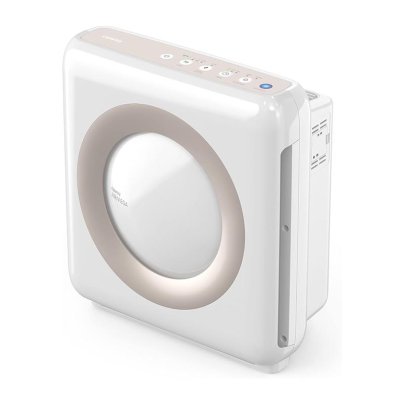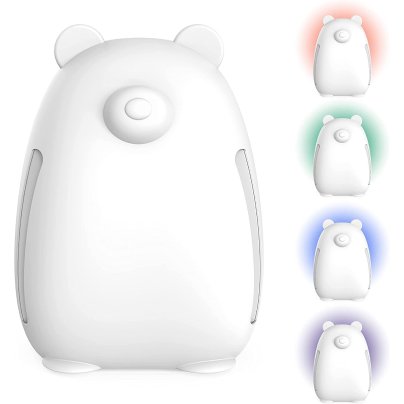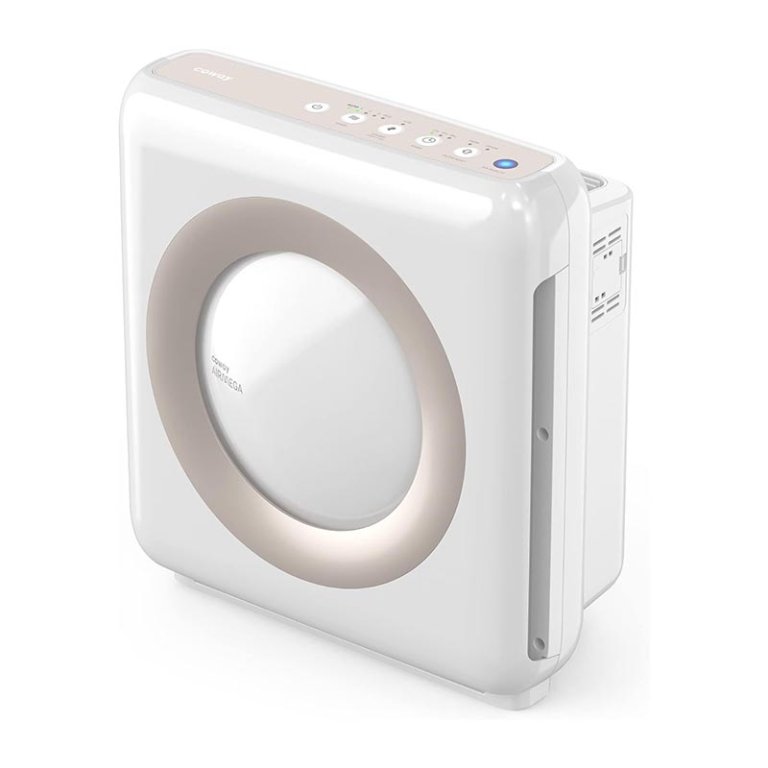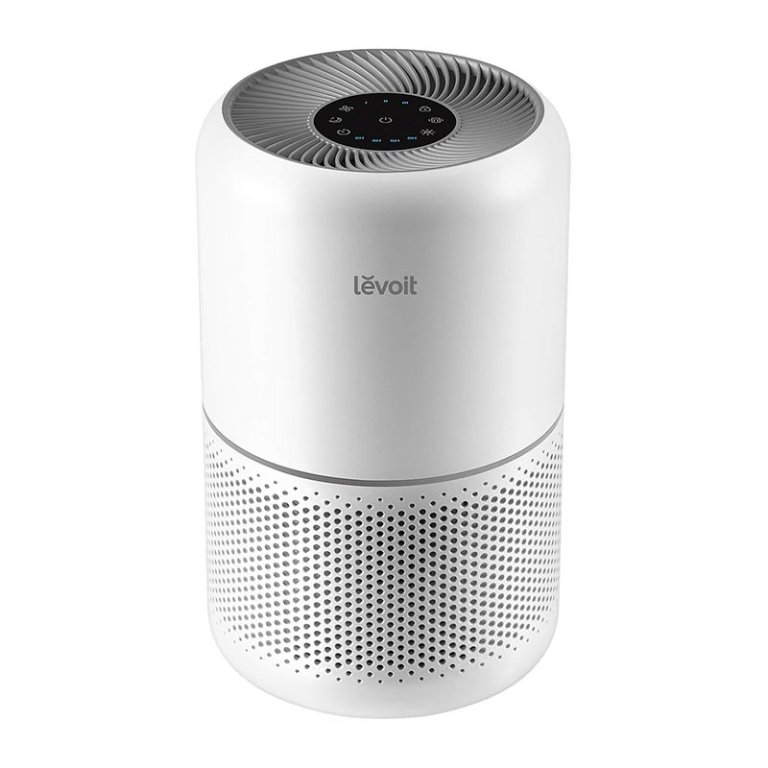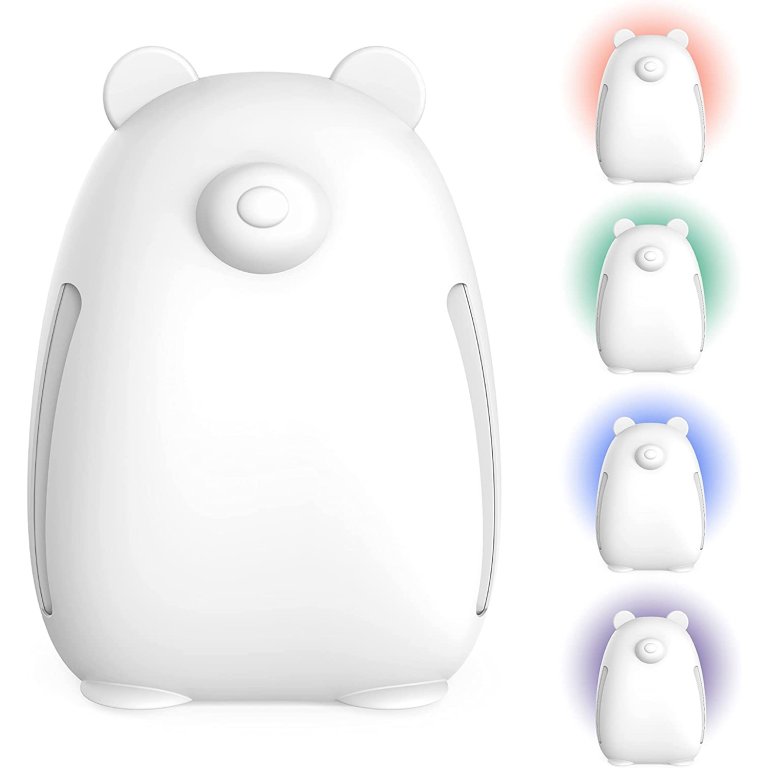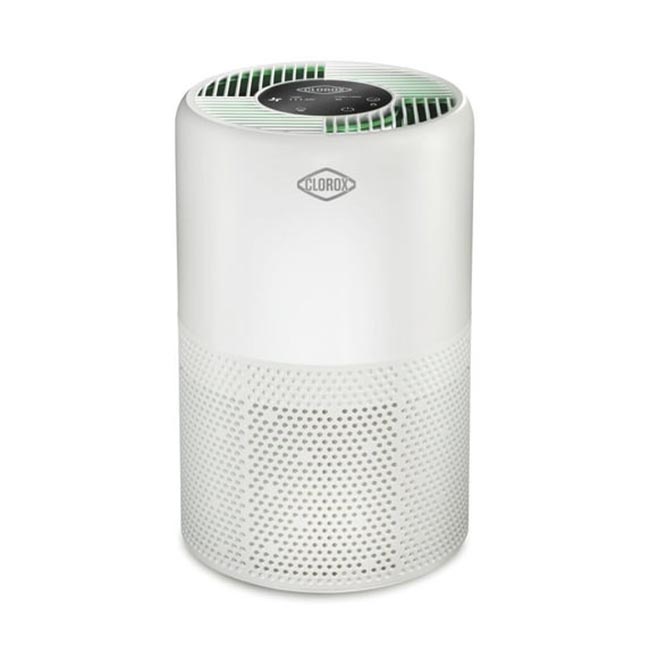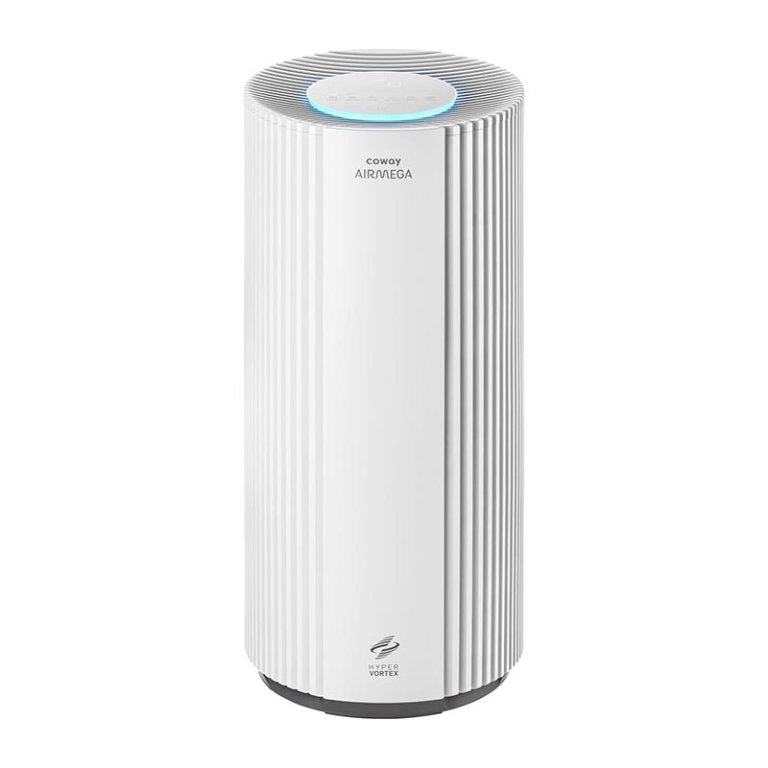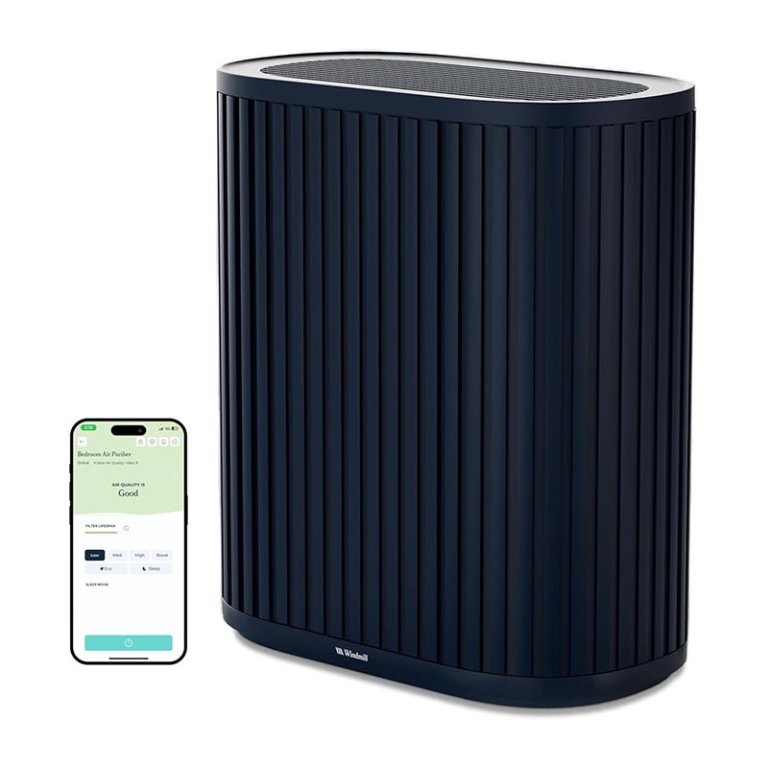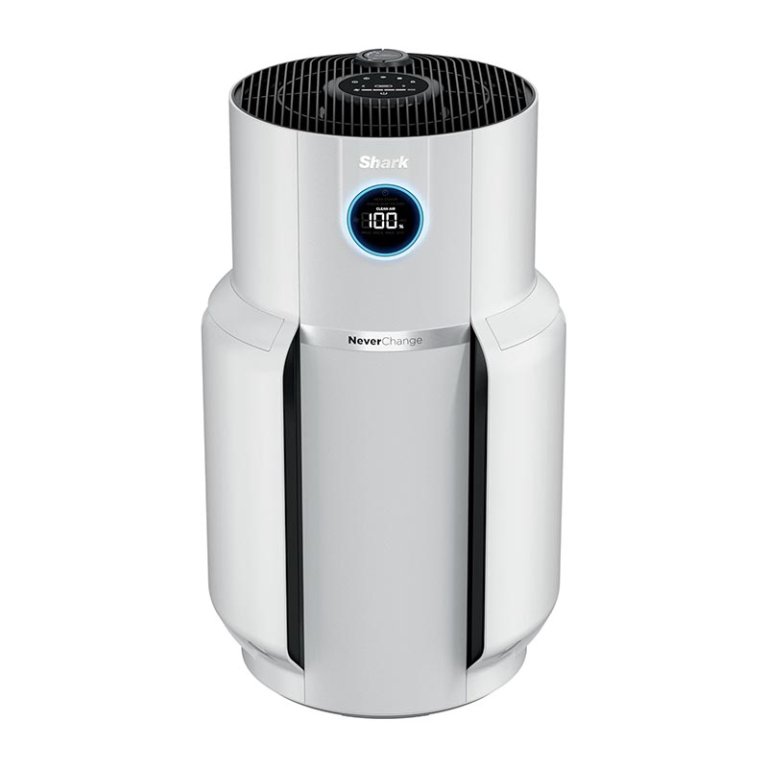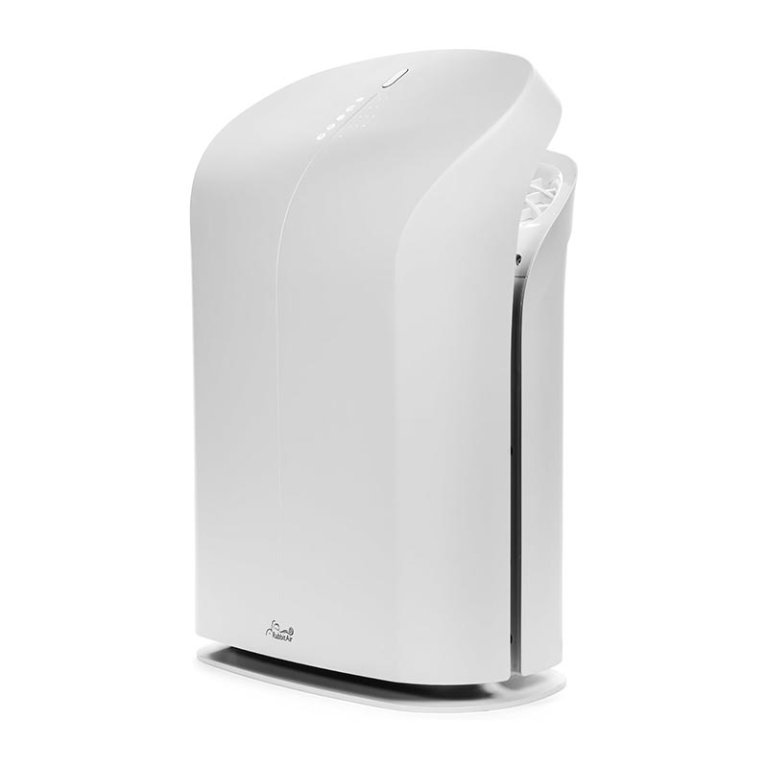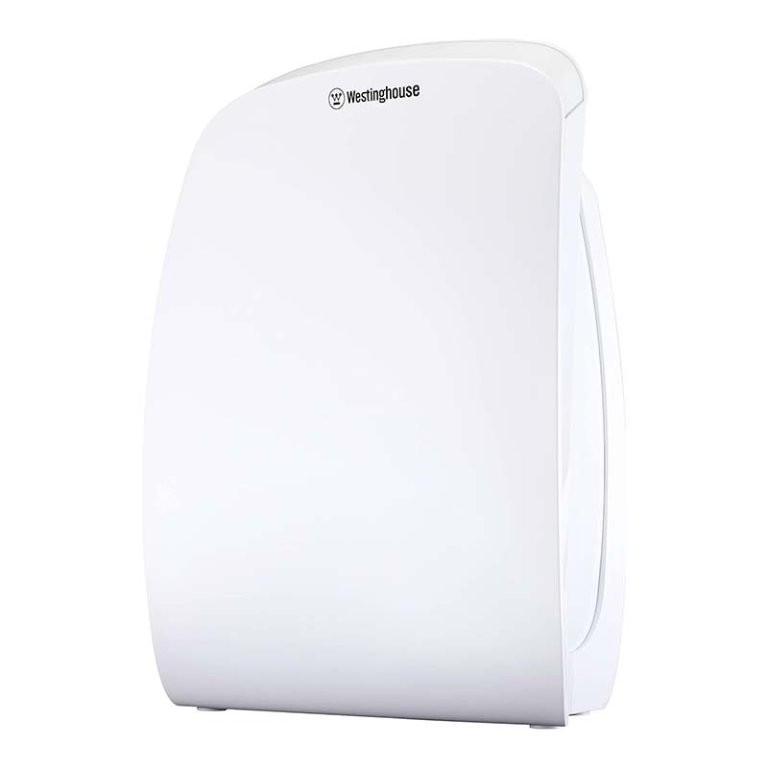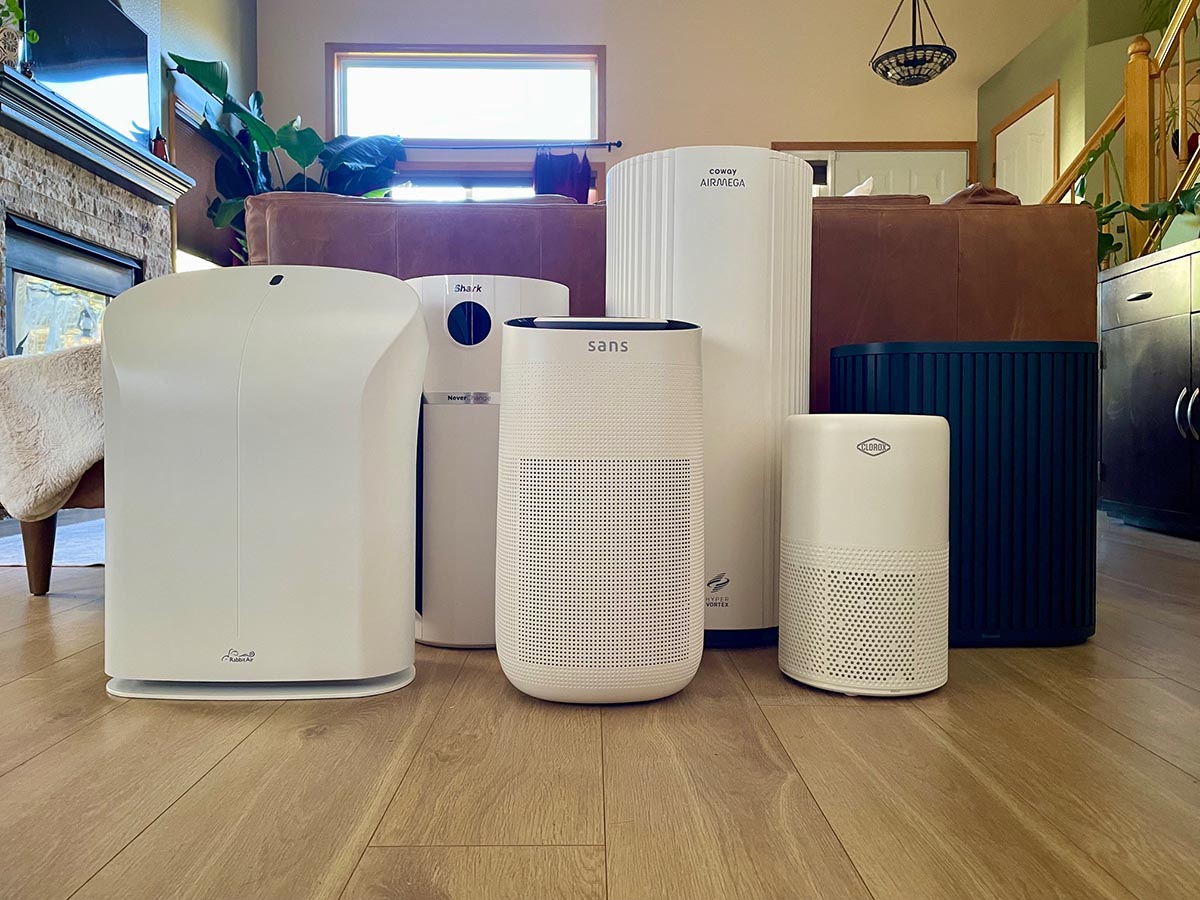
We may earn revenue from the products available on this page and participate in affiliate programs. Learn More ›
As consumers become more aware of the airborne pollutants lurking in their homes, the demand for high-quality air purifiers continues to rise. And since home technology is evolving quickly—even in products that rely on simple filtration principles—we tested 18 top-rated home air purifiers in both extreme and real-world conditions to help you find the right one for your needs.
After using some models for a few weeks and others for several years, we chose the Coway Airmega AP-1512HH Mighty Air Purifier as the best overall model for its effective four-stage filtration system, user-friendly features, large coverage area, and reasonable price. However, several other units performed nearly as well, scoring only a fraction of a point lower, and one of those might be a better fit for your home.
Ahead, learn which 10 machines made our list of the best air purifiers and get details on the features to prioritize when making your choice.
- BEST OVERALL: Coway Airmega AP-1512HH Mighty Air Purifier
↓ Jump to Review - BEST BANG FOR THE BUCK: Levoit Core Mini-P Air Purifier
↓ Jump to Review - BEST FOR KIDS’ ROOMS: Pure Enrichment PureBaby Bear Air Purifier
↓ Jump to Review - BEST FOR MEDIUM ROOMS: Clorox Medium-Room Turbo+ True HEPA Air Purifier
↓ Jump to Review - BEST FOR LARGE ROOMS: Sans Whole Home Air Purifier
↓ Jump to Review - BEST WHOLE-HOUSE: Coway Airmega 450 Air Purifier
↓ Jump to Review - BEST FOR ALLERGIES: Windmill Air Purifier
↓ Jump to Review - BEST FOR SMOKE: Shark NeverChange Air Purifier Max
↓ Jump to Review - BEST QUIET: Rabbit Air BioGS 2.0 Air Purifier
↓ Jump to Review - BEST MEDICAL-GRADE: Westinghouse 1701 NCCO Air Purifier
↓ Jump to Review
Air Purifiers Comparison
| Product | Filtration | Maximum Room Size | Noise Level |
|---|---|---|---|
| Coway Airmega AP-1512HH Mighty Air Purifier | Prefilter, activated carbon filter, True HEPA filter | Up to 1,748 square feet | 25 to 53 decibels |
| Levoit Core Mini-P Air Purifier | Prefilter, activated carbon filter, Core Mini-RF filter | Up to 254 square feet | 27 to 45 decibels |
| Pure Enrichment PureBaby Bear Air Purifier | Activated carbon filter, antibacterial filter, H13 HEPA filter, optional UV-C sanitizing light | Up to 263 square feet | 28 to 53 decibels |
| Clorox Medium-Room Turbo+ True HEPA Air Purifier | Prefilter, activated carbon filter, True HEPA filter | Up to 1,000 square feet | 24 to 50 decibels |
| Sans Whole Home Air Purifier | Prefilter, activated carbon filter, H13 HEPA filter, optional UV-C sanitizing light | Up to 1,854 square feet | 25 to 53 decibels |
| Coway Airmega 450 Air Purifier | Prefilter, activated carbon filter, Green True HEPA filter | Up to 3,285 square feet | 23.6 to 57.7 decibels |
| Windmill Air Purifier | Prefilter, activated carbon filter, H13 HEPA filter | Up to 1,950 square feet | 16 to 54 decibels |
| Shark NeverChange Air Purifier Max | Prefilter, pet particle filter, activated carbon filter, True HEPA filter | Up to 1,400 square feet | 38.3 to 64.6 decibels |
| Rabbit Air BioGS 2.0 Air Purifier | Prefilter, activated carbon filter, BioGS HEPA filter, optional ionizer | Up to 1,100 square feet | 22.8 to 48.6 decibels |
| Westinghouse 1701 NCCO Air Purifier | Prefilter, activated carbon filter, H13 HEPA filter, NCCO technology | Up to 300 square feet | 37 to 57 decibels |
Our Top Picks
Air purifiers work by drawing air in through a fan, passing it through filters that remove harmful particles, gases, and odors, and then releasing it back into the room. Each of the following top air purifiers excelled in our tests for performance, ease of use, noise, and overall value.
Best Overall
Photo: AmazonWhat We Like
- 4-stage filtration includes an optional bipolar ionizer
- HEPA filter expected to last 1 year
- 5 airflow settings, including Eco and Auto modes
- Large coverage area
What We Don’t Like
- Bulky square design takes up a bit of space
Specs
- Filtration: Prefilter, activated carbon filter, True HEPA filter
- Maximum room size: Up to 1,748 square feet
- Noise level: 25 to 53 decibels
Our Ratings: Ease of Use 4.75/5; Performance 4.5/5; Noise 4/5; Value 4.75/5
The Coway Airmega has long been a favorite of reviewers and consumers for its four-stage filtration system, which includes a prefilter, deodorization filter, True HEPA filter, and bipolar ionizer. Together, these layers effectively capture smoke (including secondhand smoke), pet odors and dander, and everyday dust. An air quality light indicates whether the air is good (blue), moderate (purple), or unhealthy (red).
In testing, the only aspect of this model we didn’t love was that the 16.8-inch by 18.3-inch by 9.6-inch square was tough to tuck inconspicuously away. However, since it sits under a window in our bedroom, we appreciate how well its Auto mode adapts to both indoor and outdoor air quality changes, even during cooking from 25 feet away. Whether the wind is kicking up allergens and dust or we let something go too long on the stove, it quickly ramps up to accommodate the issue. And during our incense and vacuum-dust tests, it efficiently removed visible particles from the air.
Like almost every room air purifier we tested, this pick was relatively loud on high (53 decibels) but whisper-quiet on low (only 25 decibels). It doesn’t have a fancy touchscreen or WiFi-connected smart features, but when it comes to ample coverage, reliable performance, and a reasonable price, it’s hard to beat.
What our tester says: “We’ve had this Coway in our bedroom for several years, and it still reliably kicks on whenever outdoor pollutants drift in or cooking odors come down the hall. I love that I can wash pet air out of the prefilter and only need to replace the HEPA once a year.”—Michelle Larson, Product Reviews tester and writer
Get the Coway Airmega AP-1512HH air purifier at Amazon, Walmart, or Coway.
Best Bang for the Buck
Photo: AmazonWhat We Like
- High setting is relatively quiet at 45 decibels
- A relatively cheap air purifier that’s good for small spaces
- Compact design fits well on shelves and dressers
What We Don’t Like
- Takes longer to freshen the air than larger models
Specs
- Filtration: Prefilter, activated carbon filter, Core Mini-RF filter
- Maximum room size: Up to 254 square feet
- Noise level: 27 to 45 decibels
Our Ratings: Ease of Use 4.5/5; Performance 3.5/5; Noise 4.5/5; Value 4.5/5
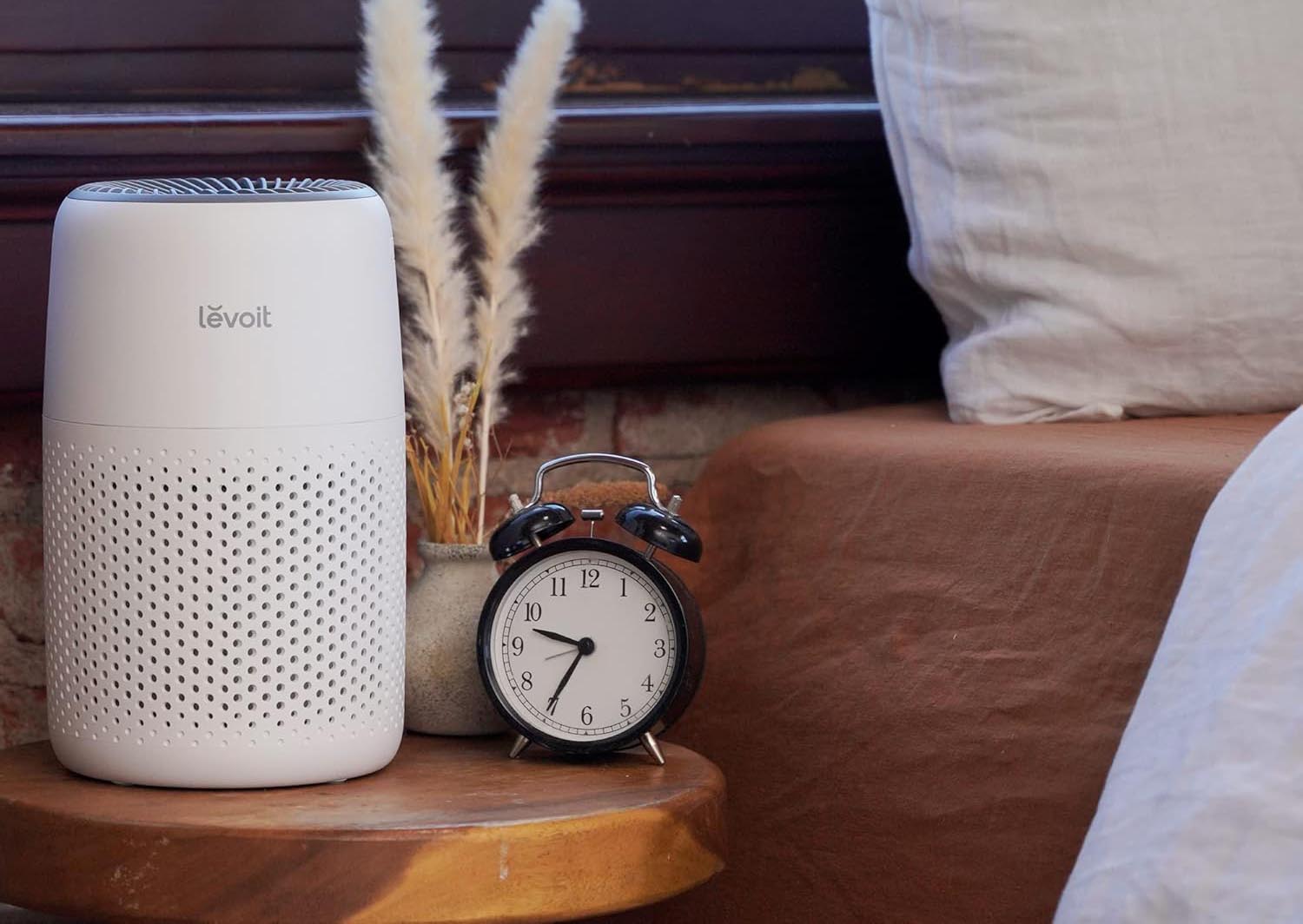
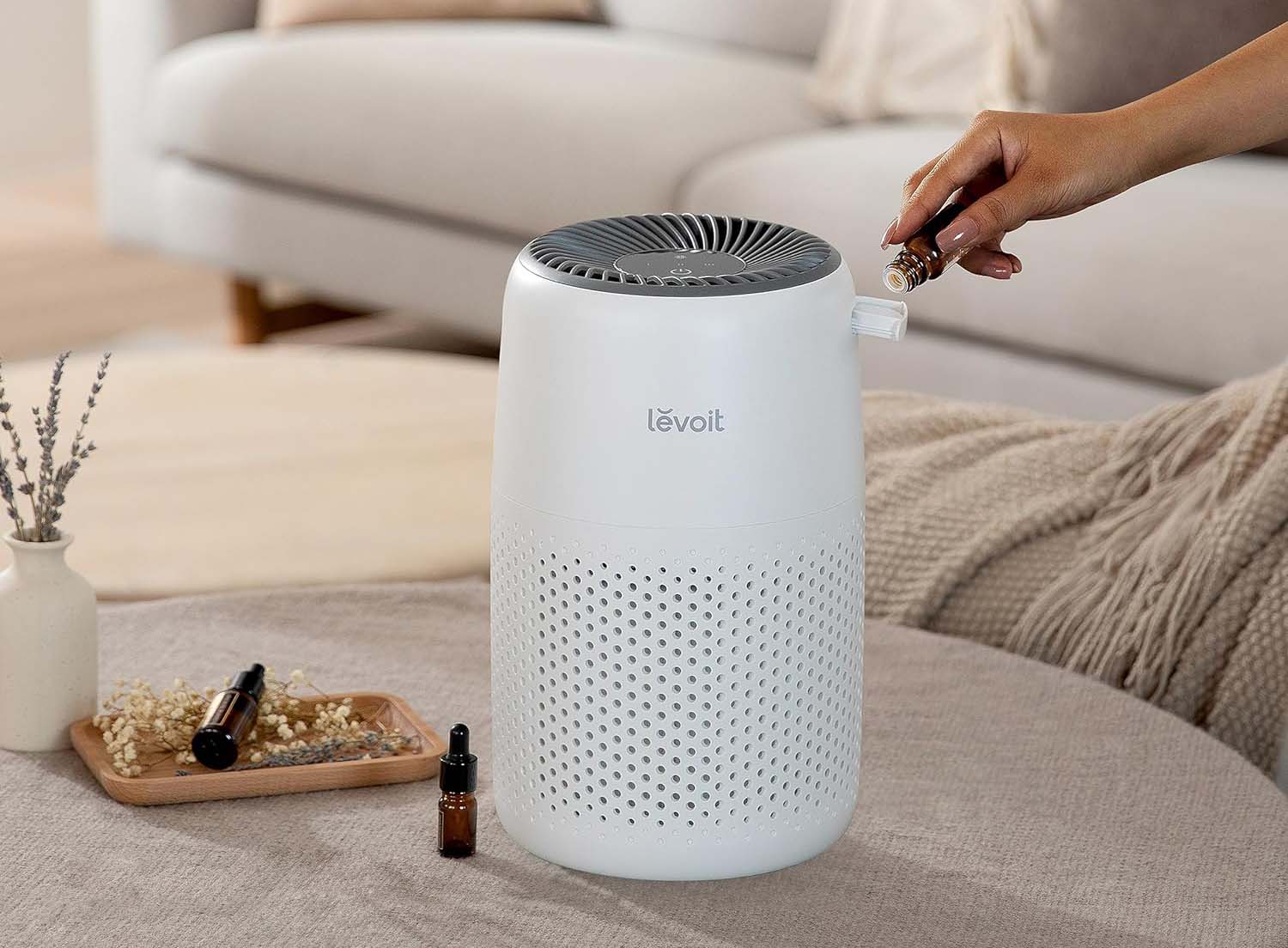
Those looking for a good air purifier for small rooms don’t have to spend a lot. The Levoit Core Mini removes airborne particulates, odors, and volatile organic compounds (VOCs) in spaces up to 254 square feet at a very affordable price. It’s also very quiet, generating just 27 decibels on low and about 45 decibels on high. We didn’t find the noise distracting on either level, as it sounded much like a soothing hum.
In our pollutant tests, the Levoit portable air purifier took a bit longer than other models to clean the air, which isn’t surprising given its compact size. It needed about 90 minutes to clear the airborne particles from our shaken rug test and 2 hours to eliminate the smell from our incense test. However, our smoke test was aggressive. Users would rarely, if ever, run into a situation where a small room got that smoky.
Given time, the Levoit personal air purifier gets the job done. It’s not powerful enough for larger spaces, but when run continuously in a small bedroom, nursery, or home office, it keeps the air noticeably fresher.
Read our full review: Levoit Core Mini-P Air Purifier
Get the Levoit air purifier at Amazon, Walmart, or Levoit.
Best for Kids’ Rooms
Photo: AmazonWhat We Like
- Looks cute in nurseries and kids’ rooms
- 4-stage filtration with medical-grade HEPA filter
- 7 night-light colors provide a comforting glow
What We Don’t Like
- Doesn’t have tip-over protection; should be kept out of reach
Specs
- Filtration: Activated carbon filter, antibacterial filter, H13 True HEPA filter, optional UV-C sanitizing light
- Maximum room size: Up to 263 square feet
- Noise level: 28 to 53 decibels
Our Ratings: Ease of Use 4.5/5; Performance 4/5; Noise 4/5; Value 4.5/5
The PureBaby Bear purifier adds a whimsical touch to kids’ rooms while still delivering serious air-cleaning power. It features a four-stage filtration system with an activated carbon prefilter, an H13 True HEPA filter, an antibacterial filter, and an ultraviolet light for killing germs. It also has a built-in night-light with seven adjustable colors and operates relatively quietly at 28 to 53 decibels. We actually found its sound so soothing that we think this pick could do double duty as a white noise machine.
As adorable as it is, this air purifier still means business when it comes to performance. In our tests, it cleared enough dust from our vacuum canister within 30 minutes to get air quality back into the safe zone. Smoke and odors took a bit longer at 1.5 hours, but that’s understandable since the PureBaby Bear is small enough to fit easily on a shelf or dresser.
This compact air purifier for bedroom use is designed to accommodate rooms up to 263 square feet and comes with an auto shut-off feature and a child-lock button. Since it doesn’t have tip-over protection, however, it’s best to place it out of reach.
Get the Pure Enrichment air purifier at Amazon, The Home Depot, Target, or Pure Enrichment.
Best for Medium Rooms
Photo: AmazonWhat We Like
- 360-degree 3-stage filtration system
- Turbo timer cleans poor-quality air quickly
- Energy Star certified
- Filter lasts up to a year
What We Don’t Like
- Slightly noisy on turbo mode
Specs
- Filtration: Prefilter, activated carbon filter, True HEPA filter
- Maximum room size: Up to 1,000 square feet
- Noise level: 24 to 50 decibels
Our Ratings: Ease of Use 4.5/5; Performance 4.5/5; Noise 4/5; Value 4.3/5
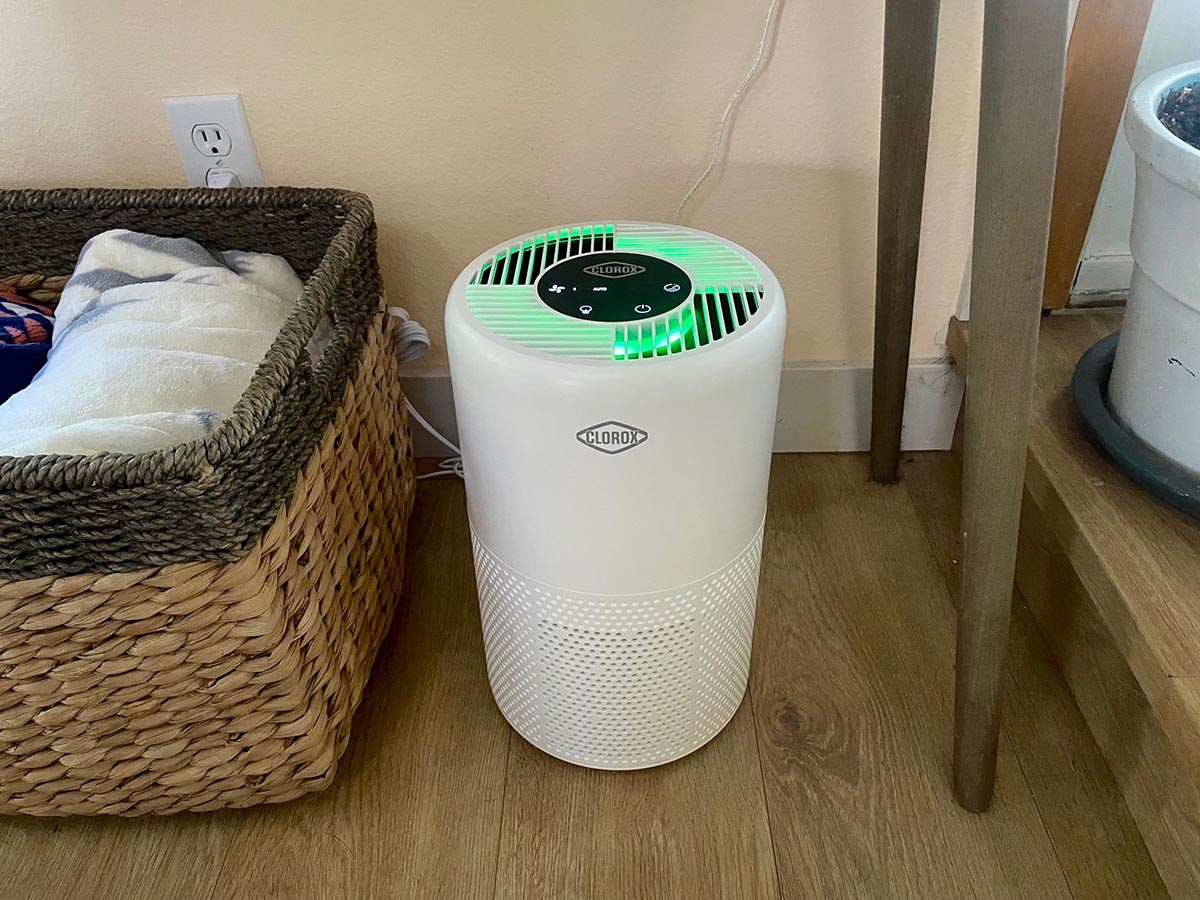
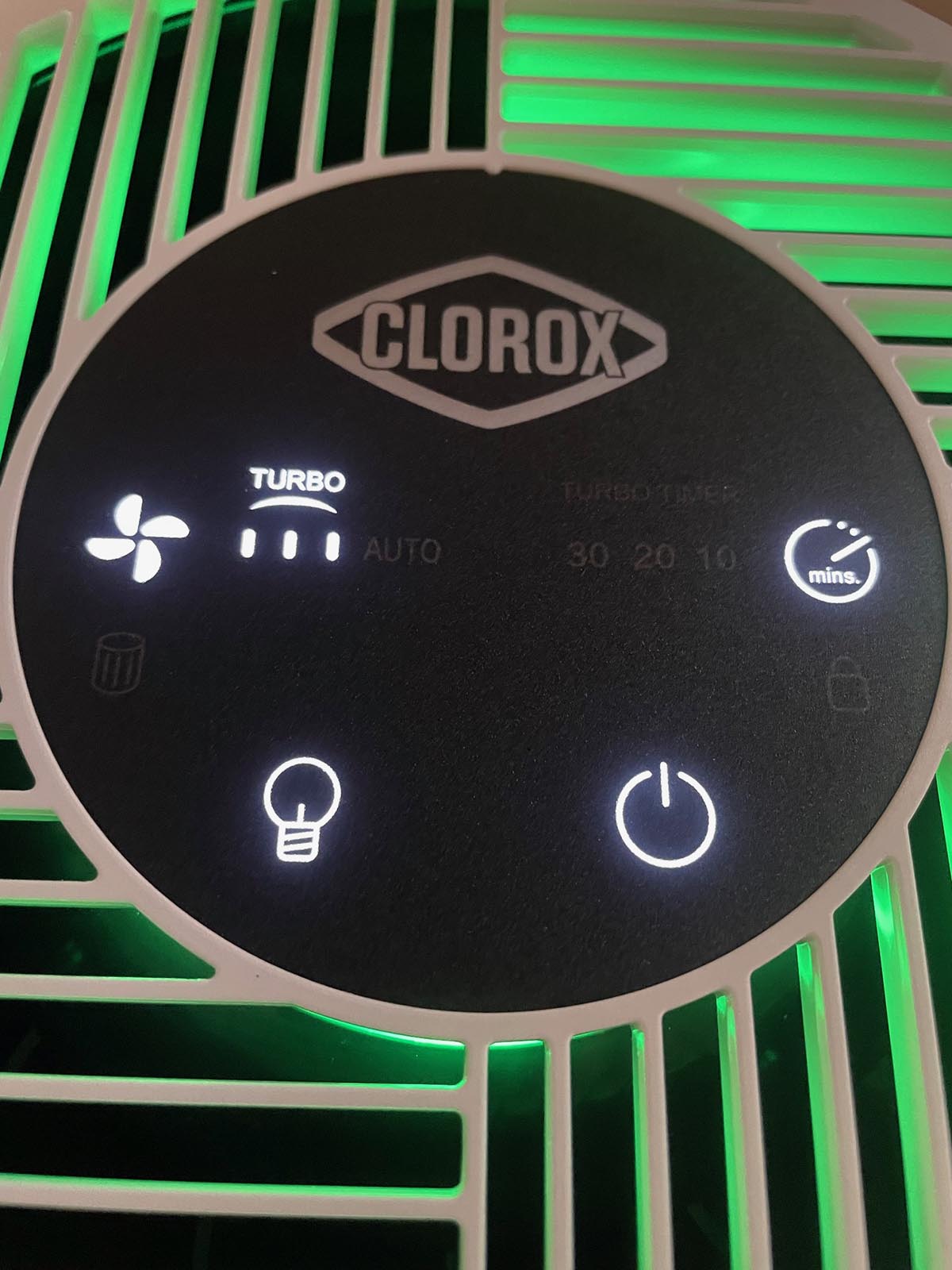
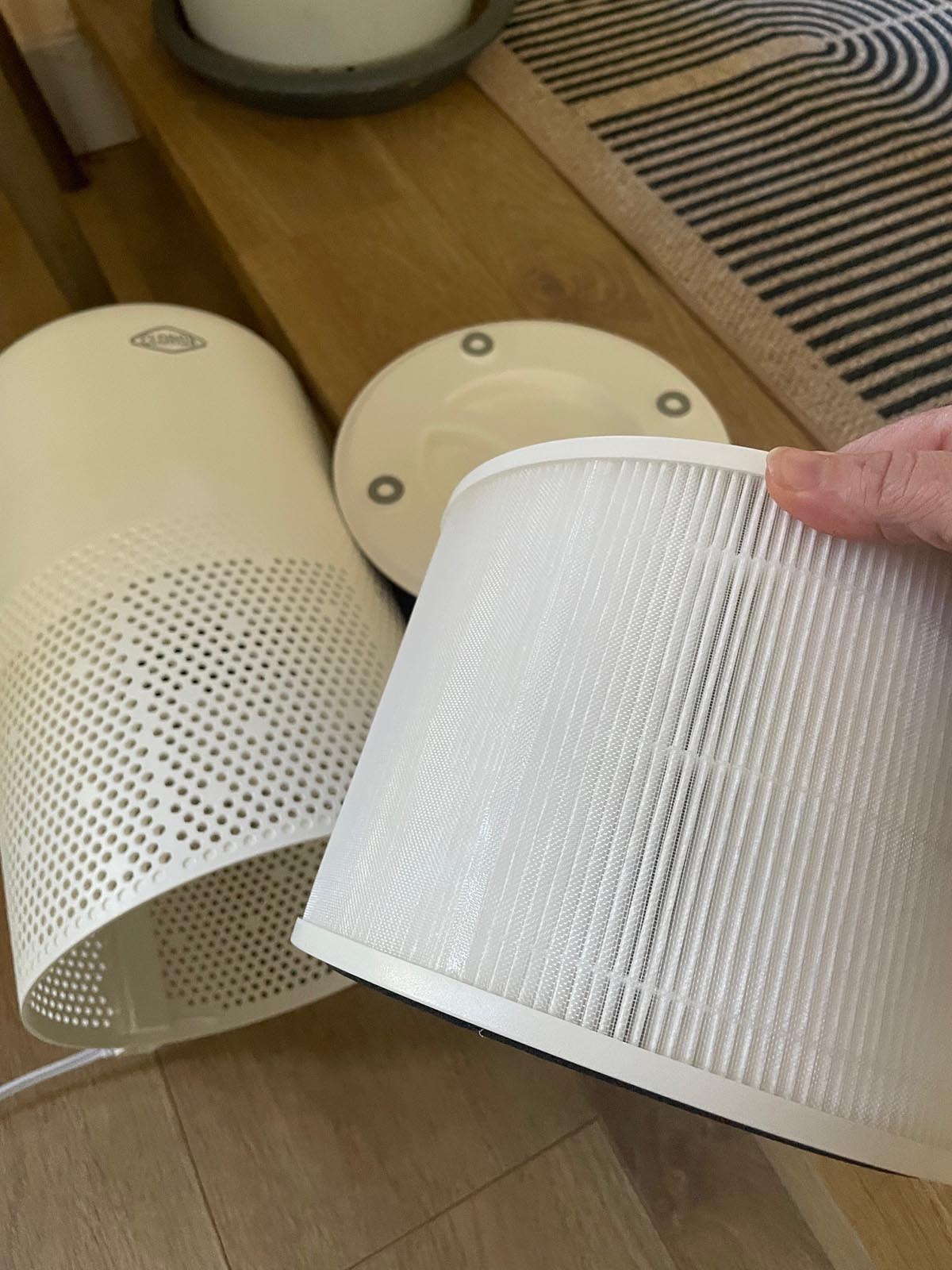
The Clorox Turbo+ True HEPA air purifier is an excellent choice for anyone looking to improve air quality in medium-sized spaces. Certified by Energy Star and featuring a 360-degree three-stage filter, it captures an impressive 99.97 percent of airborne allergens, dust, and pet dander without using more electricity than necessary. In addition to three speed settings and auto mode, this model also has a Turbo Timer for 10, 20, or 30 minutes of quick cleaning when air quality is particularly bad.
In our tests, Turbo mode was the feature that impressed us most. Other than being a bit loud at 50 decibels, it cleared both dust from our vacuum canister test and smoke from our incense test in about 20 minutes each. It performed just as well during daily use, eliminating smoke and odors in only a few minutes when we forgot a grilled cheese on the stove. The three-in-one filter is designed to last up to a year, and there’s a filter replacement indicator light that lets you know when it’s time.
Get the Clorox air purifier at Walmart or Clorox.
Best for Large Rooms
Photo: AmazonWhat We Like
- Medical-grade HEPA filter and UV-C sanitation
- Can clear air in up to 1,854 square feet in an hour
- Portable 11-pound design with fold-flat handle
What We Don’t Like
- Filter replacement recommended every 3 months
Specs
- Filtration: Prefilter, activated carbon filter, HEPA 13 filter, optional UV-C sanitizing light
- Maximum room size: Up to 1,854 square feet
- Noise level: 25 to 53 decibels
Our Ratings: Ease of Use 4.75/5; Performance 4.75/5; Noise 4/5; Value 4.3/5
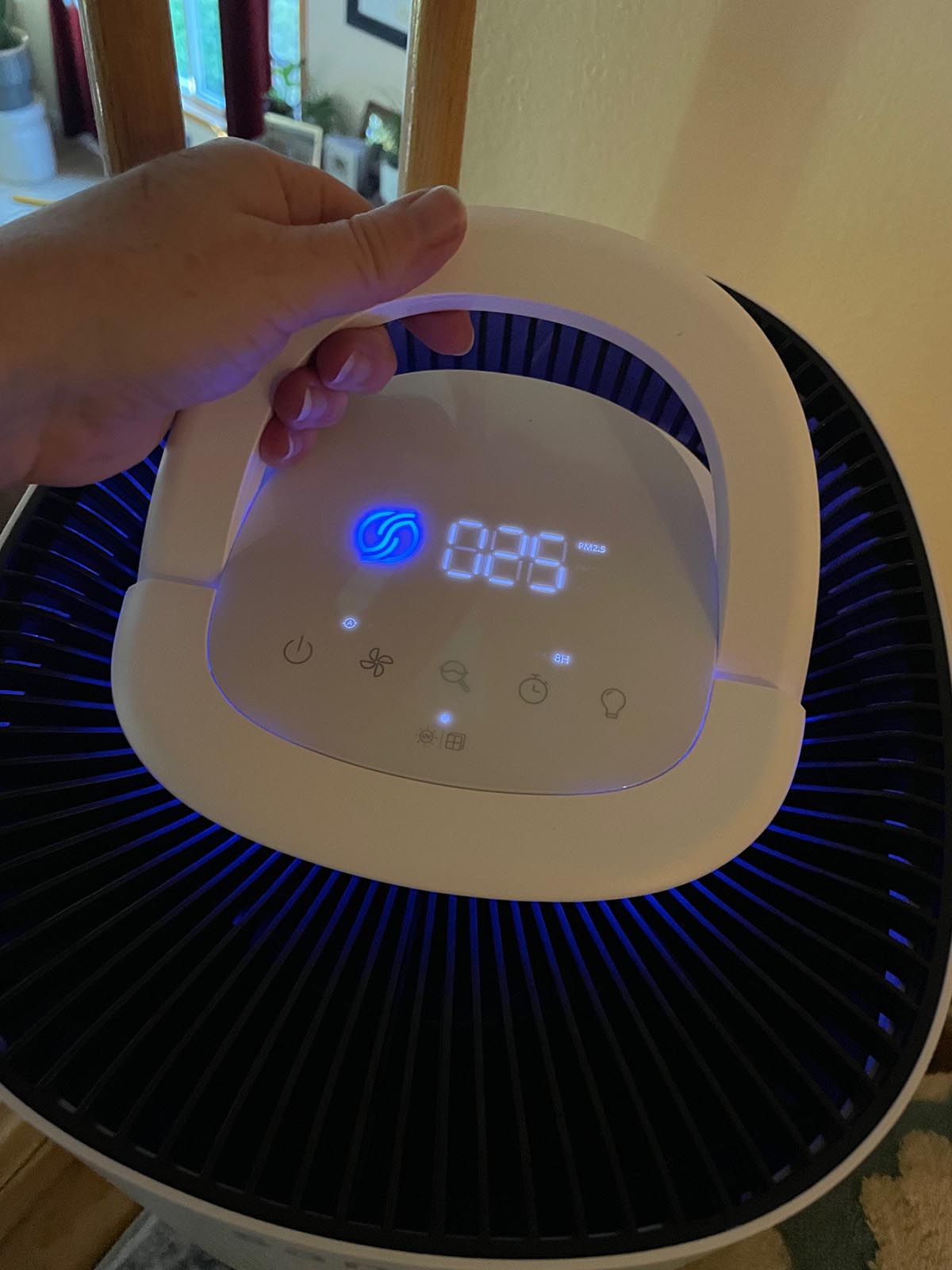
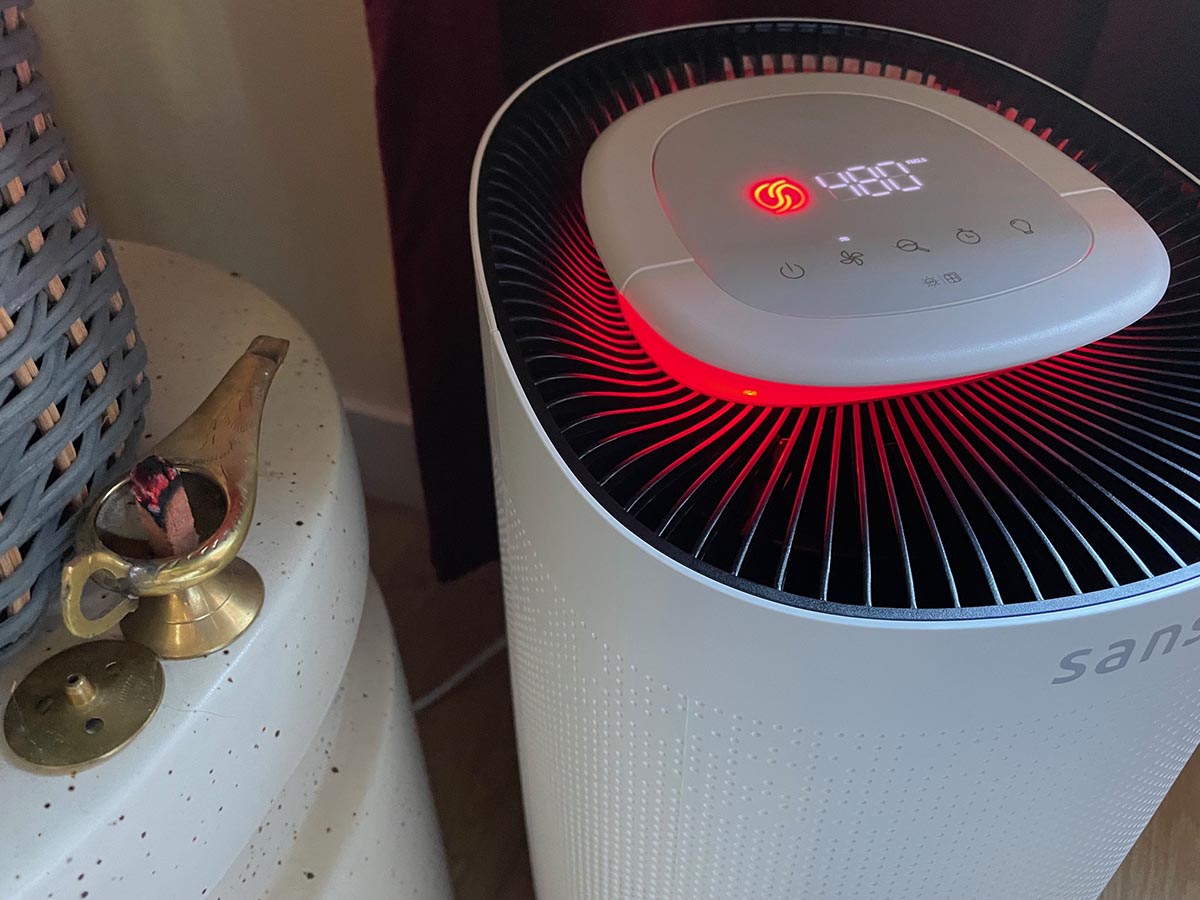
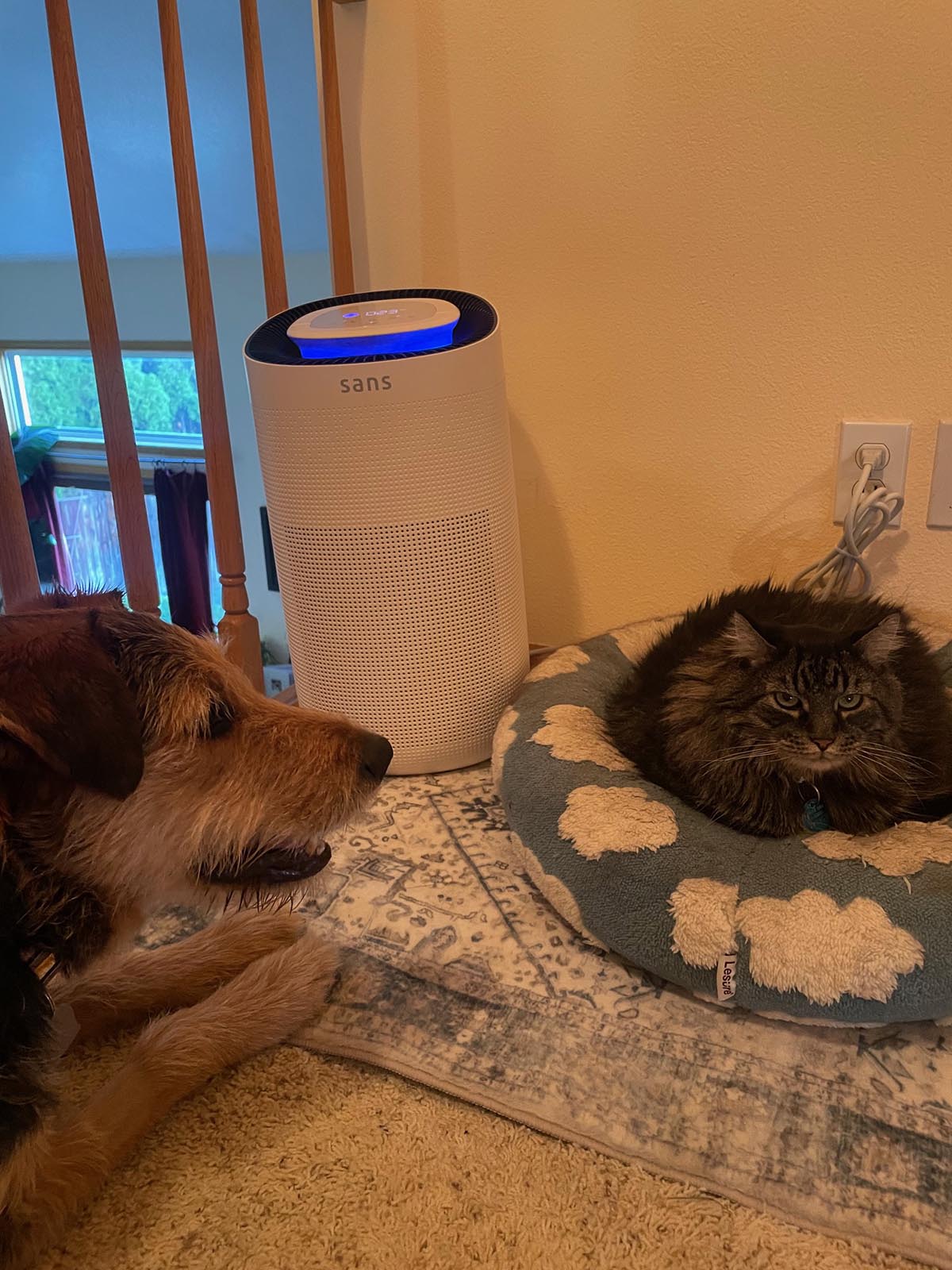
With its medical-grade HEPA 13 filter, activated carbon layer, and UV-C sanitizing light, the Sans home air purifier provides thorough air cleaning for spaces up to 1,854 square feet. It has all the features you’d expect from a quality model—including three speed settings and an auto mode—plus some extras I’ve really come to appreciate. I especially love the fold-flat handle for easy portability (a design feature I’ve never seen before), the informative display that shows current PM2.5, PM10, and VOC levels, and the optional UV-C light, which adds peace of mind during cold and flu season.
We’ve been keeping this model at the top of our stairs outside our daughter’s room and my home office, and it reliably kicks in whenever our pets are nearby or cooking odors drift up from the kitchen. It does get a bit loud on high (53 decibels), which is typical for a unit with such a large coverage area, but its efficiency means it rarely runs that hard for long. More often than not, it clears our air on low, which is whisper-quiet at 25 decibels. The only thing I don’t love about this model is that Sans recommends changing the three-in-one filter every 3 months, though the process is easy and the filters are reasonably priced.
Read our full review: Sans Whole Home Air Purifier
What our tester says: “I’ve personally tested about 20 air purifiers, and the Sans has been one of my favorites. I love the combo of a medical-grade HEPA filter and germ-killing UV-C light, and its light weight and handle make it easy to move wherever I need it.”—Michelle Larson, Product Reviews tester and writer
Get the Sans air purifier at Amazon or Sans.
Best Whole-House
Photo: AmazonWhat We Like
- Covers up to 3,285 square feet
- Effective HyperVortex airflow design
- Very quiet on low setting
What We Don’t Like
- High setting is fairly loud
Specs
- Filtration: Prefilter, activated carbon filter, Green True HEPA filter
- Maximum room size: Up to 3,285 square feet
- Noise level: 23.6 to 57.7 decibels
Our Ratings: Ease of Use 4/5; Performance 5/5; Noise 3.5/5; Value 4/5
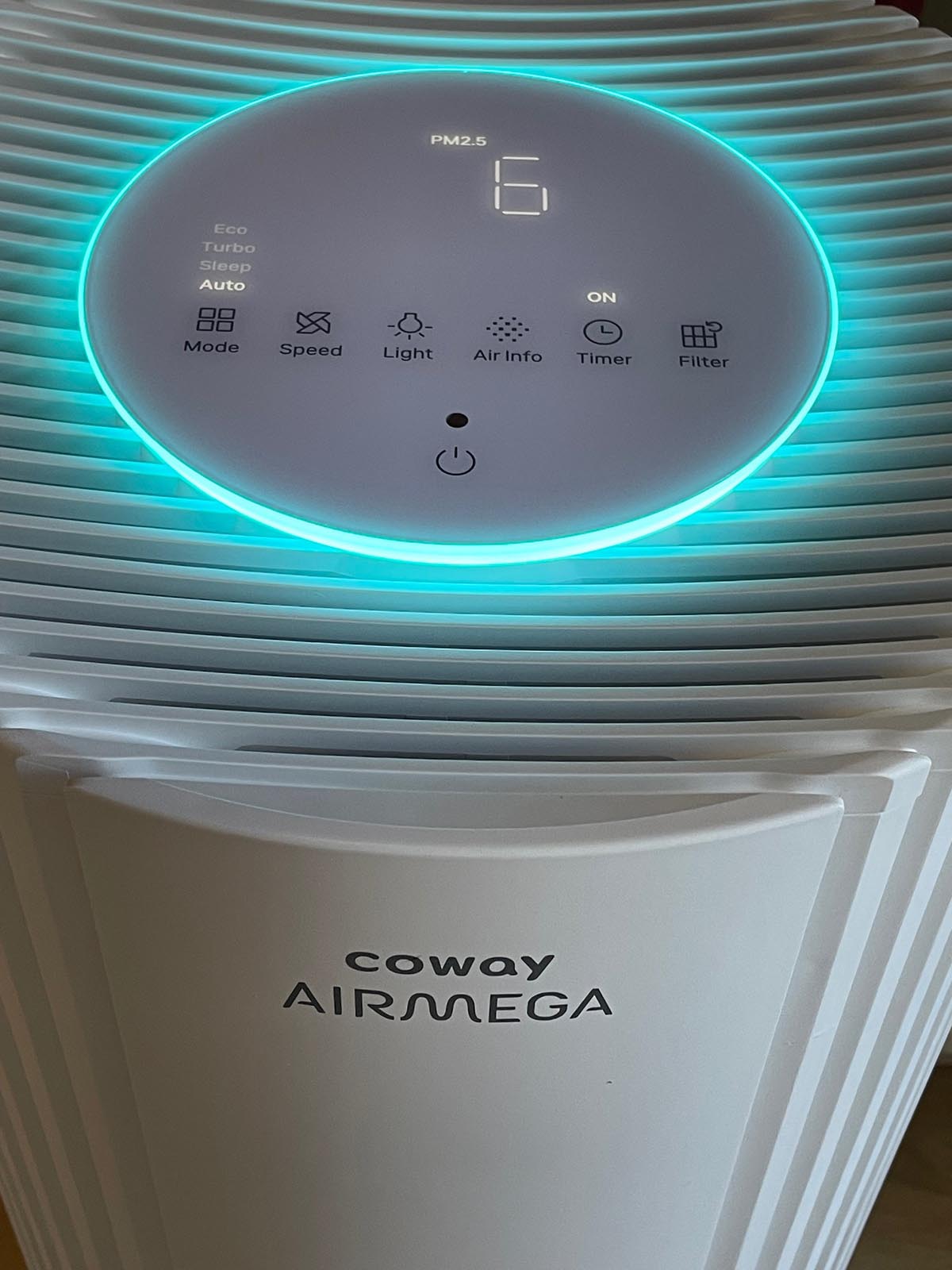
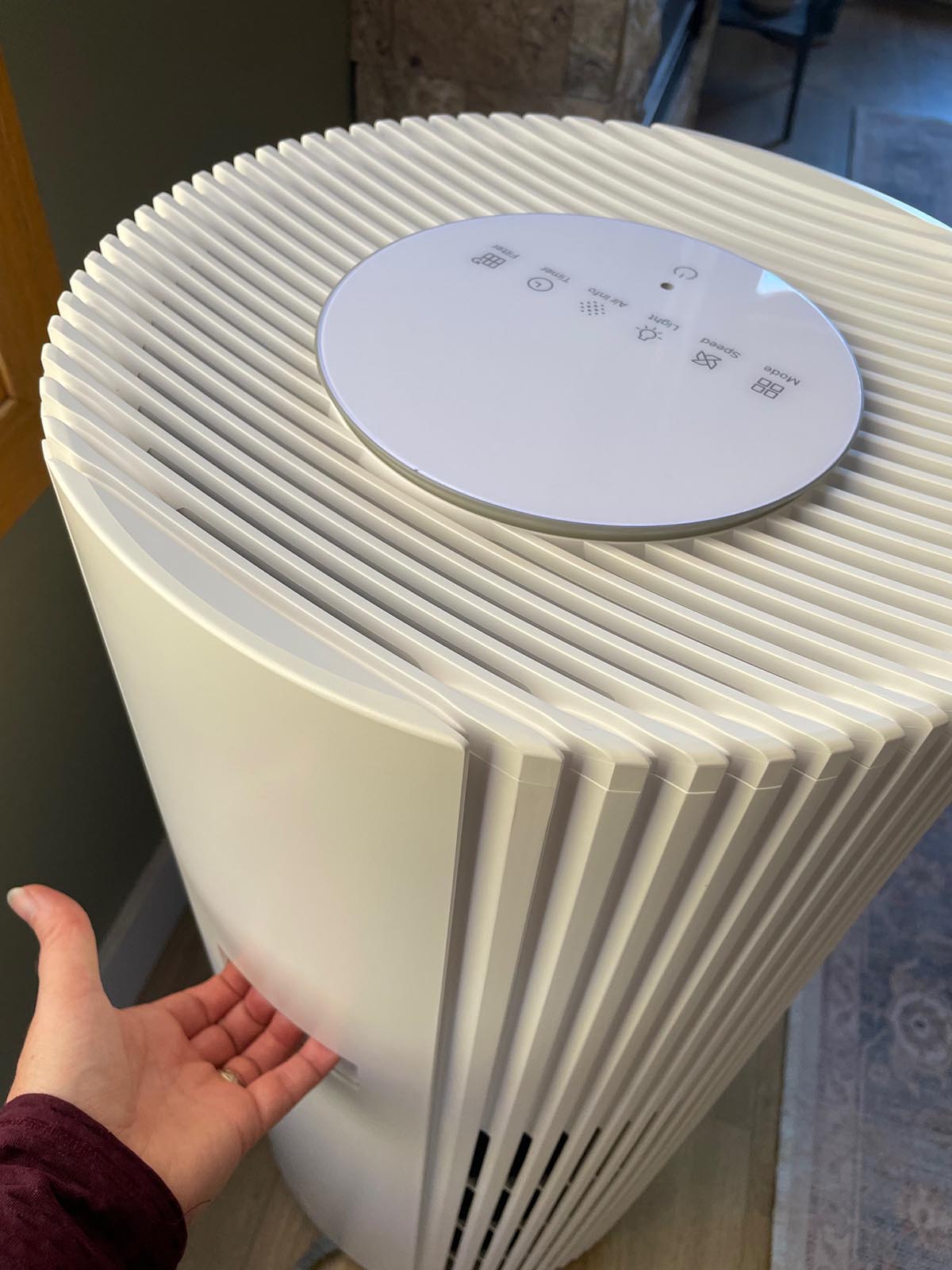
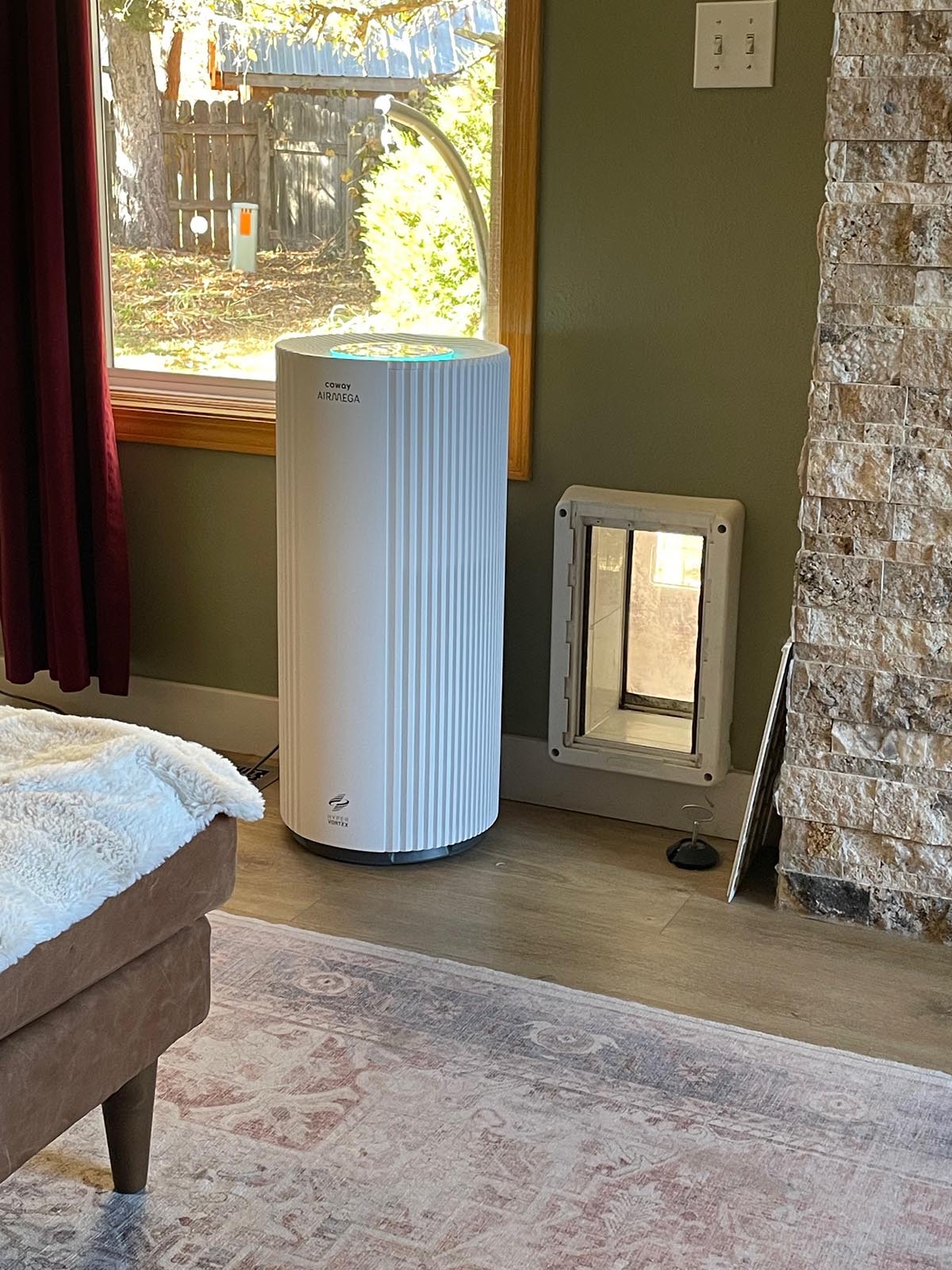
The Coway Airmega 450 is a large air purifier built for up to 3,285 square feet of whole-house coverage. Its patented HyperVortex filtration system uses aerodynamic winged blades and a specially designed intake duct to create powerful airflow for maximum purification power. Its three-in-one filter features a prefilter, an activated carbon filter, and a Green True HEPA filter to deliver CADRs of 439 for smoke, 445 for dust, and 450 for pollen.
In testing, we found this unit equally powerful and user-friendly. Its intuitive color-coded display made it easy to monitor air quality, and its hidden handle and wheels allowed us to move the 25-pound body without effort. It’s fully decked out with settings, including auto, eco, sleep, and turbo modes, three speed settings, a timer, button mute, control panel lock, and night-light. As for noise, it was one of the quietest models we tested on low (23.6 decibels) and also one of the loudest on high (57.7 decibels). Though the Airmega 450 is by no means inexpensive at around $500, it’s on the low end of standard whole-house air purifier cost.
Get the Coway Airmega 450 air purifier at Amazon, Walmart, or Coway.
Best for Allergies
Photo: AmazonWhat We Like
- Medical-grade HEPA filter eliminates 99.97 percent of allergens
- Quieter on low than all other models
- Offers app connectivity for remote monitoring and operation
- Attractive modern design
What We Don’t Like
- Replacement filters are on the spendy side
Specs
- Filtration: Prefilter, activated carbon filter, H13 HEPA filter
- Maximum room size: Up to 1,950 square feet
- Noise level: 16 to 54 decibels
Our Ratings: Ease of Use 4.5/5; Performance 4.75/5; Noise 4.75/5; Value 4/5
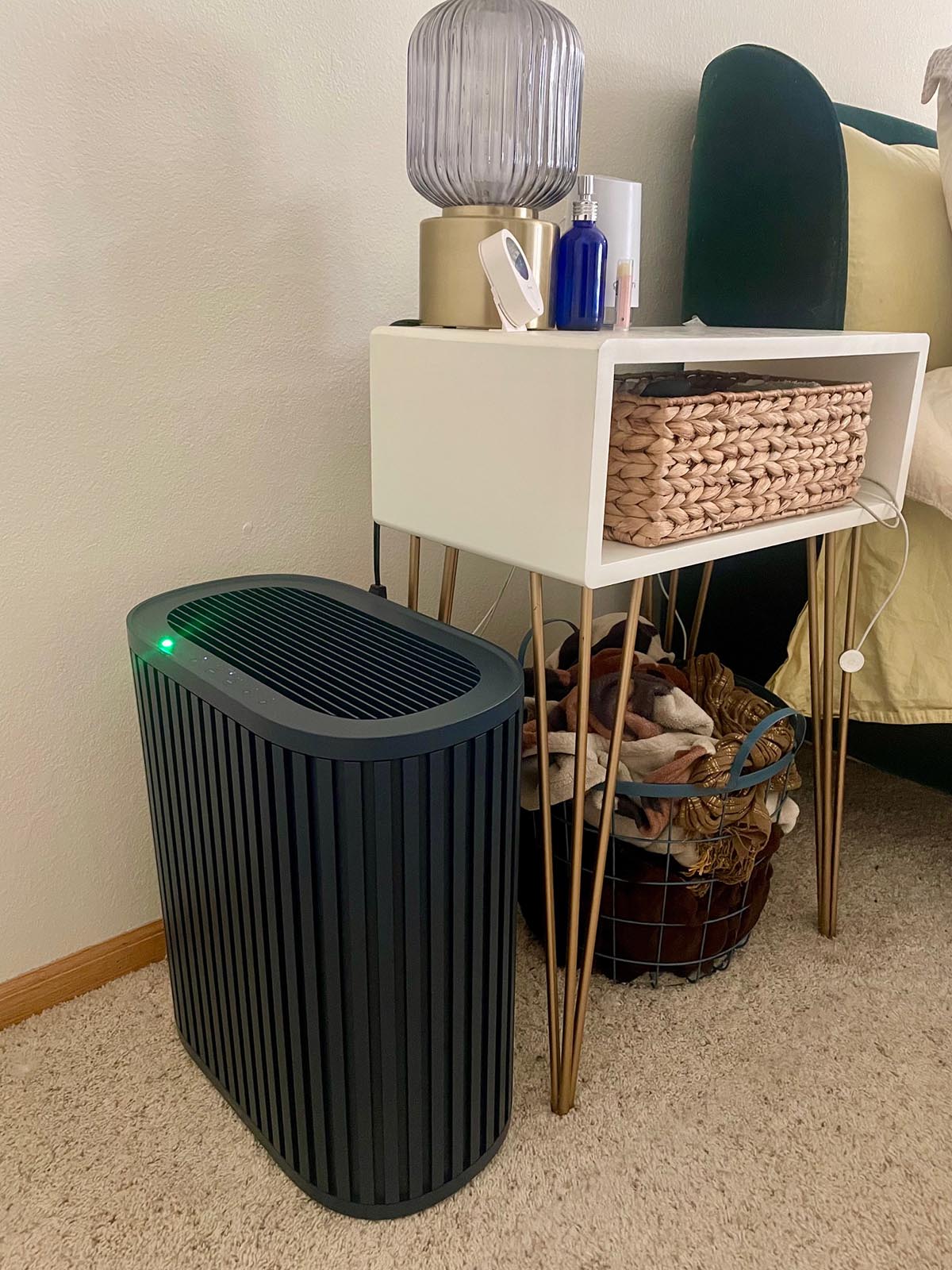
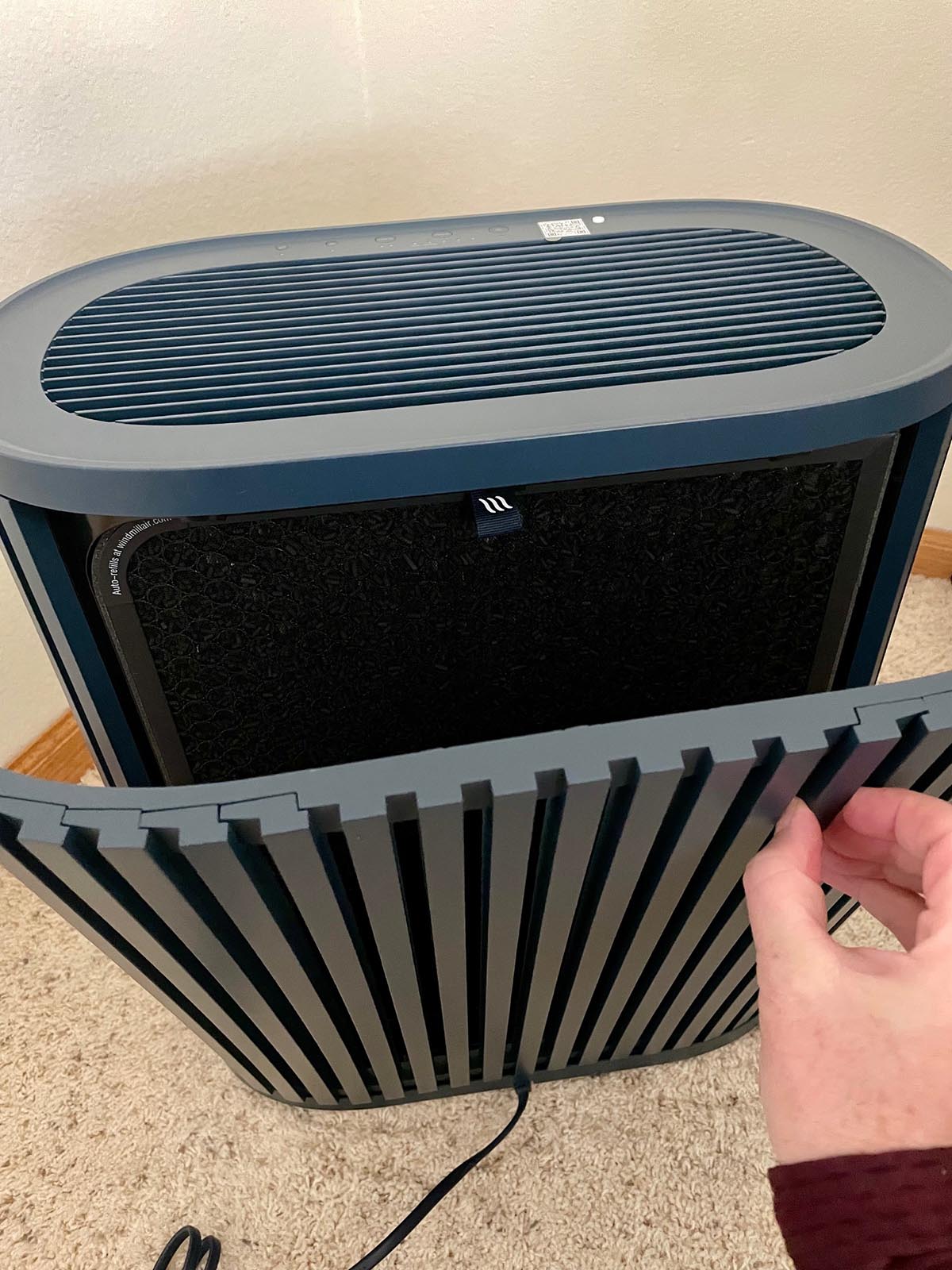
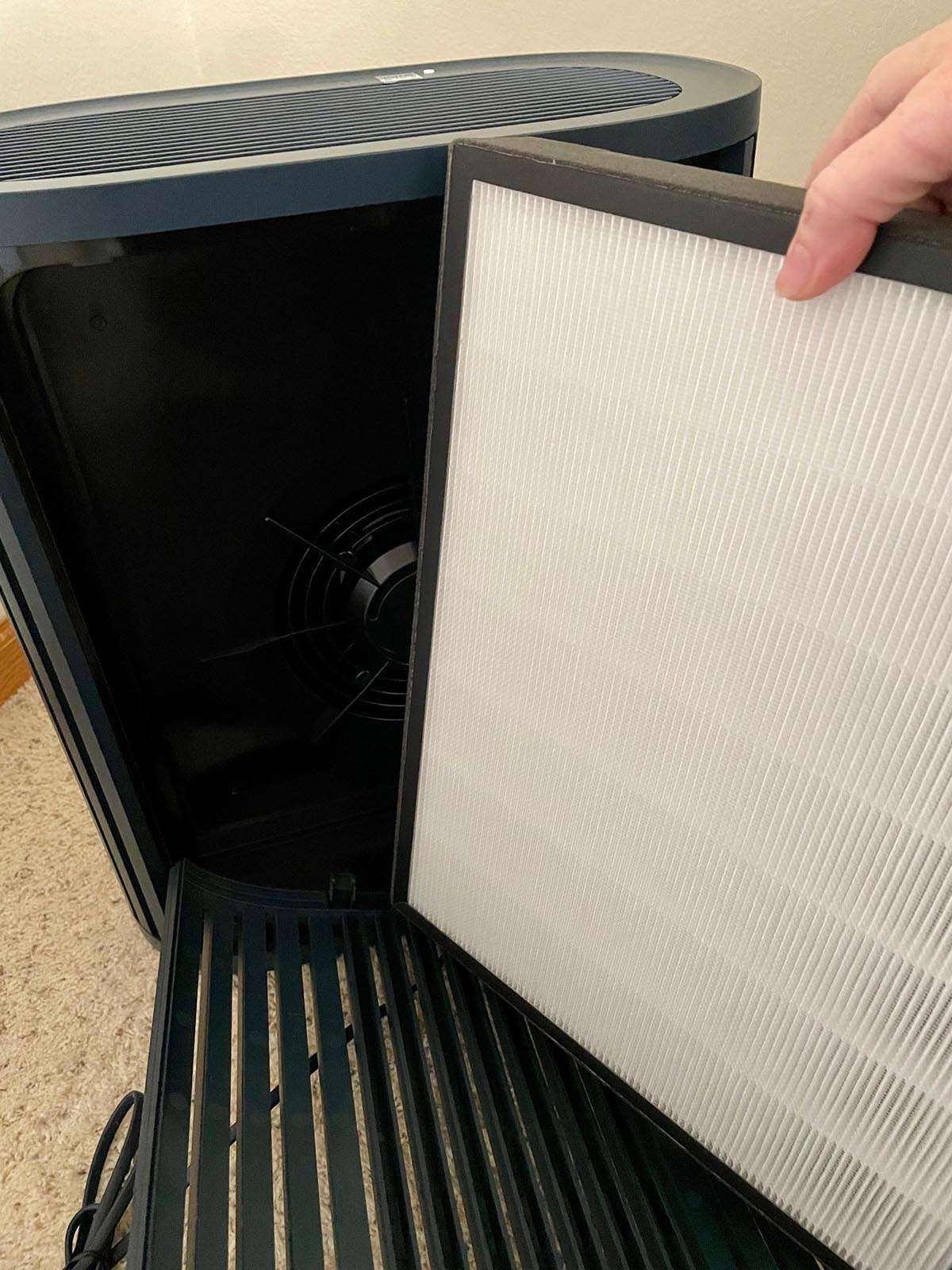
Allergy sufferers who want to feel better without compromising on style will want to consider the Windmill air purifier. Its three-stage filtration system uses a prefilter, activated carbon filter, and medical-grade HEPA filter to capture 99.97 percent of particles as small as 0.3 microns, including common allergy triggers like dust, pollen, and pet dander. It can refresh air in spaces up to 1,950 square feet in an hour, and the intuitive app makes it easy to monitor current conditions.
As much as I care about aesthetics, I’d rather have an air purifier that works well than one that looks good. The Winmill is both. After testing in our bedroom for 2 weeks, I noticed fewer complaints about allergies from my husband, and I appreciated how it improved the look of our sparsely decorated bedroom. It was also the quietest model we tested on low and eco modes, though its noise on high was in line with most others. Just be aware that the filters are on the more expensive end and should be replaced about every 6 months.
What our tester says: “Though I don’t suffer from allergies, my husband does. While I’m grateful to the Windmill for helping him feel better, I’m also grateful it looks so good doing it.”—Michelle Larson, Product Reviews tester and writer
Get the Windmill air purifier (various colors) at Amazon, The Home Depot, Wayfair, Walmart, or Windmill.
Best for Smoke
Photo: AmazonWhat We Like
- Adjustable odor neutralizer reduces odors and releases a fresh scent
- Filter lasts up to 5 years
- Covers spaces up to 1,4000 square feet
What We Don’t Like
- Louder than all other models on high
Specs
- Filtration: Prefilter, pet particle filter, activated carbon filter, True HEPA filter
- Maximum room size: Up to 1,400 square feet
- Noise level: 38.3 to 64.6 decibels
Our Ratings: Ease of Use 4.75/5; Performance 4.5/5; Noise 3.5/5; Value 4.2/5
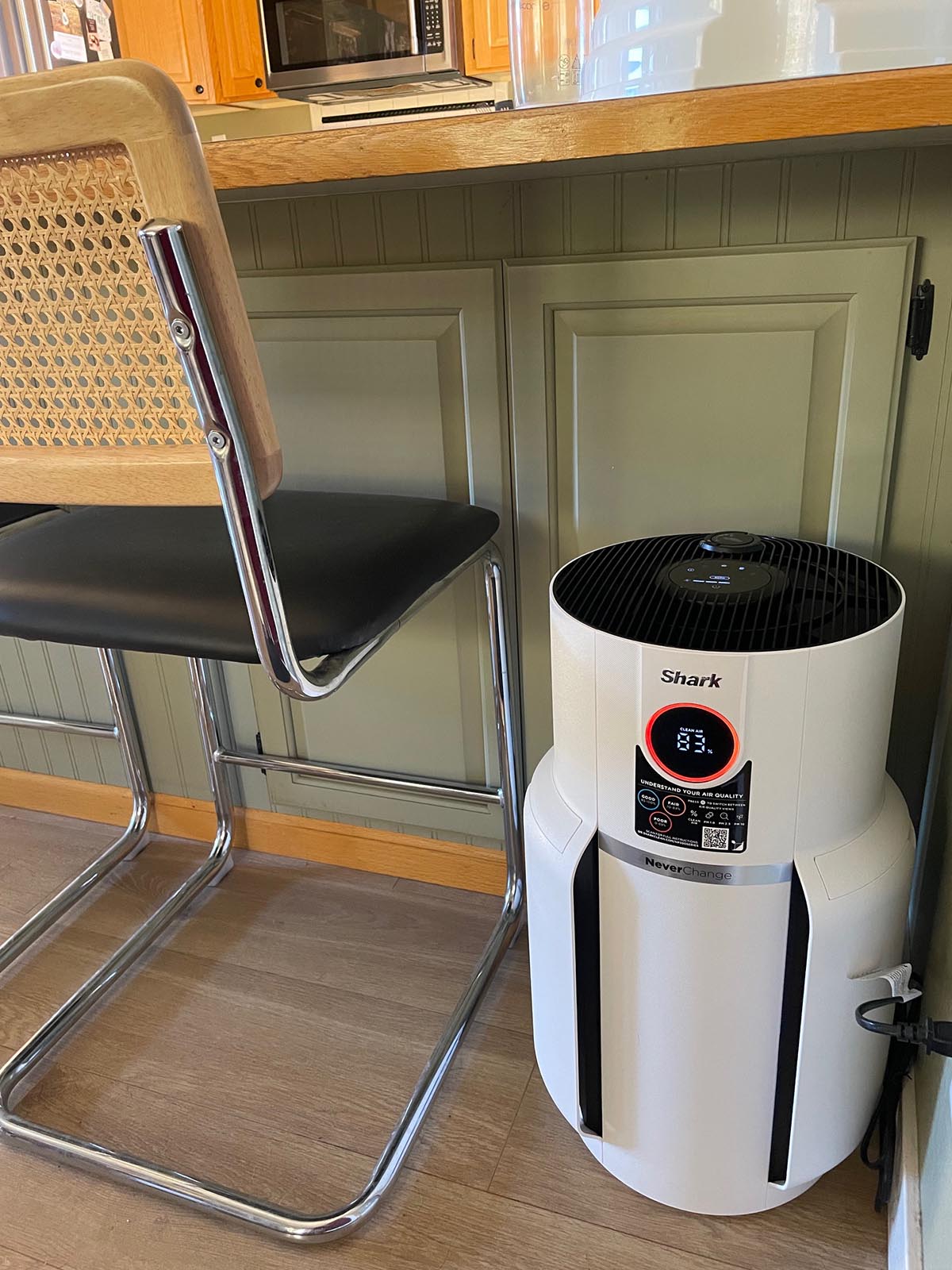
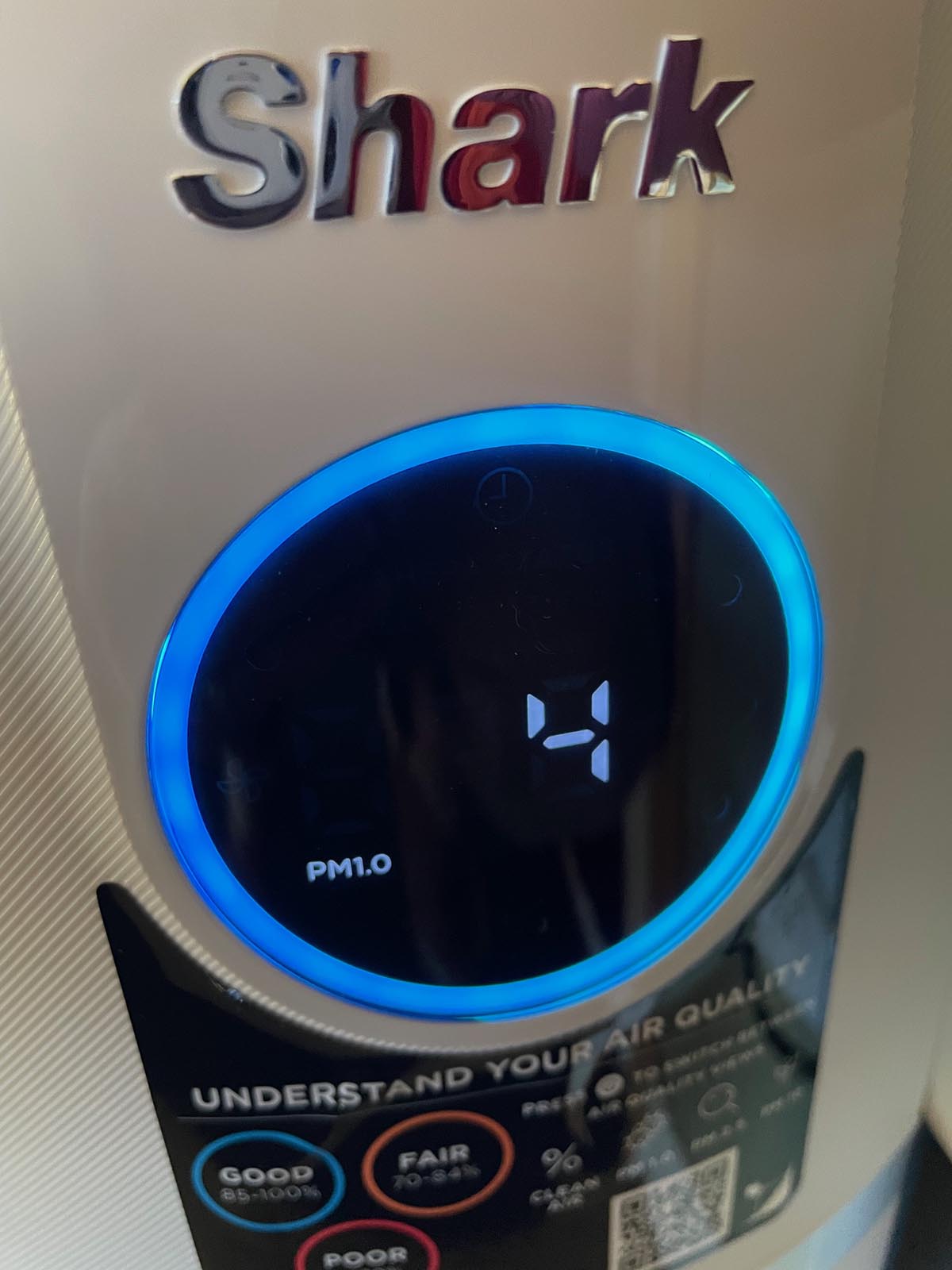
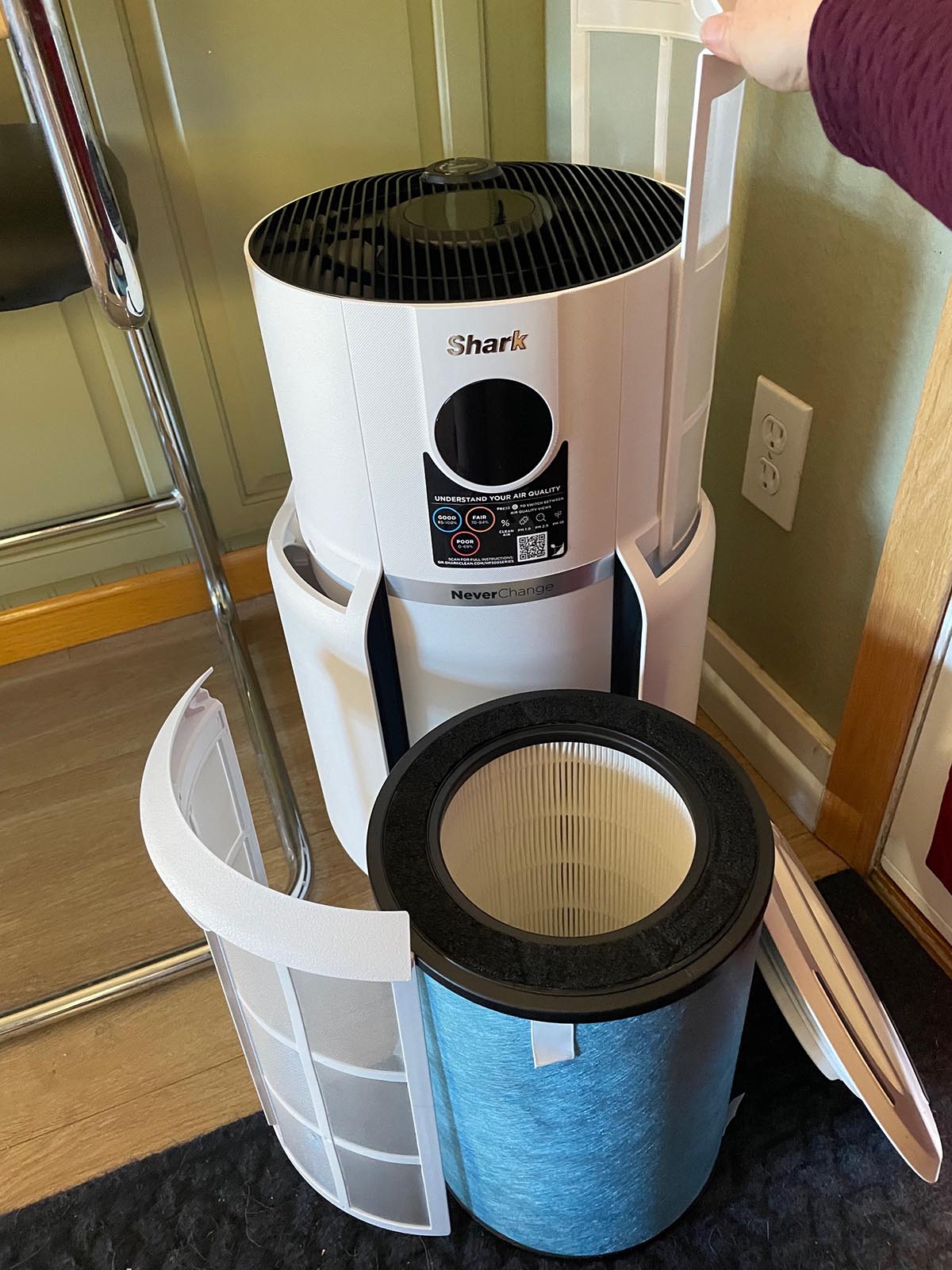
The Shark NeverChange air purifier for smoke is designed for those wanting powerful, long-term air cleaning without frequent filter changes. With a remarkable filter life of up to 5 years, this model can capture 99.98 percent of airborne particles in spaces up to 1,400 square feet. It also comes with adjustable odor neutralization cartridges that help eliminate household odors while adding a touch of fresh scent to the air. As one would expect from Shark, this model’s air quality monitoring is excellent, and its sleek LED display shows easy-to-understand air quality percentages outlined by a color-coded ring.
In our tests, the Shark did better clearing incense smoke (about 15 minutes) than it did dust and dirt we dumped out of our vacuum canister (about 30 minutes). Though both results are admirable, they came with a tradeoff: noise. When the NeverChange ratched up to high to tackle the sudden influx of airborne allergens, it was noticeably louder than all the other models we tested (64.6 decibels). Thankfully, it works quickly, because that amount of sound felt almost as loud as the vacuum we used to clean up the mess our tests made. Still, for someone who hates little maintenance tasks like replacing air purifier filters, I’ll take some occasional extra noise if it means less work and expense in the long run.
Get the Shark air purifier at Amazon, Lowe’s, The Home Depot, Wayfair, Target, Best Buy, or Shark.
Best Quiet
Photo: AmazonWhat We Like
- Quiet on all speeds, especially considering its coverage area
- Filter lasts up to 18 months
- Attractive and highly portable modern design
What We Don’t Like
- Cleans air more slowly than similar models
Specs
- Filtration: Prefilter, activated carbon filter, BioGS HEPA filter, optional ionizer
- Maximum room size: Up to 1,100 sq ft every hour or 550 sq ft with 2 air changes per hour
- Noise level: 22.8 to 48.6 decibels
Our Ratings: Ease of Use 4.5/5; Performance 4.25/5; Noise 5/5; Value 4.2/5
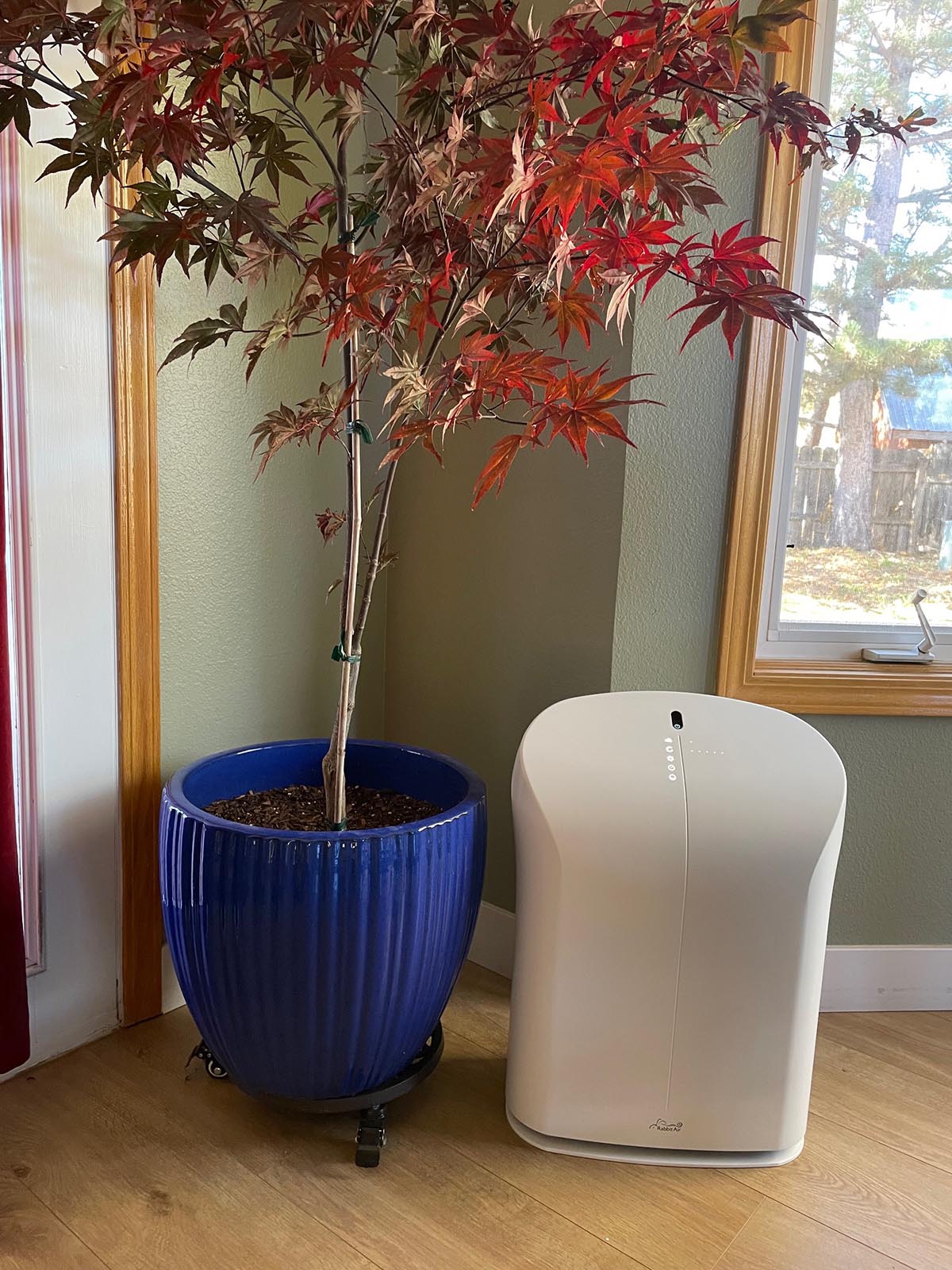
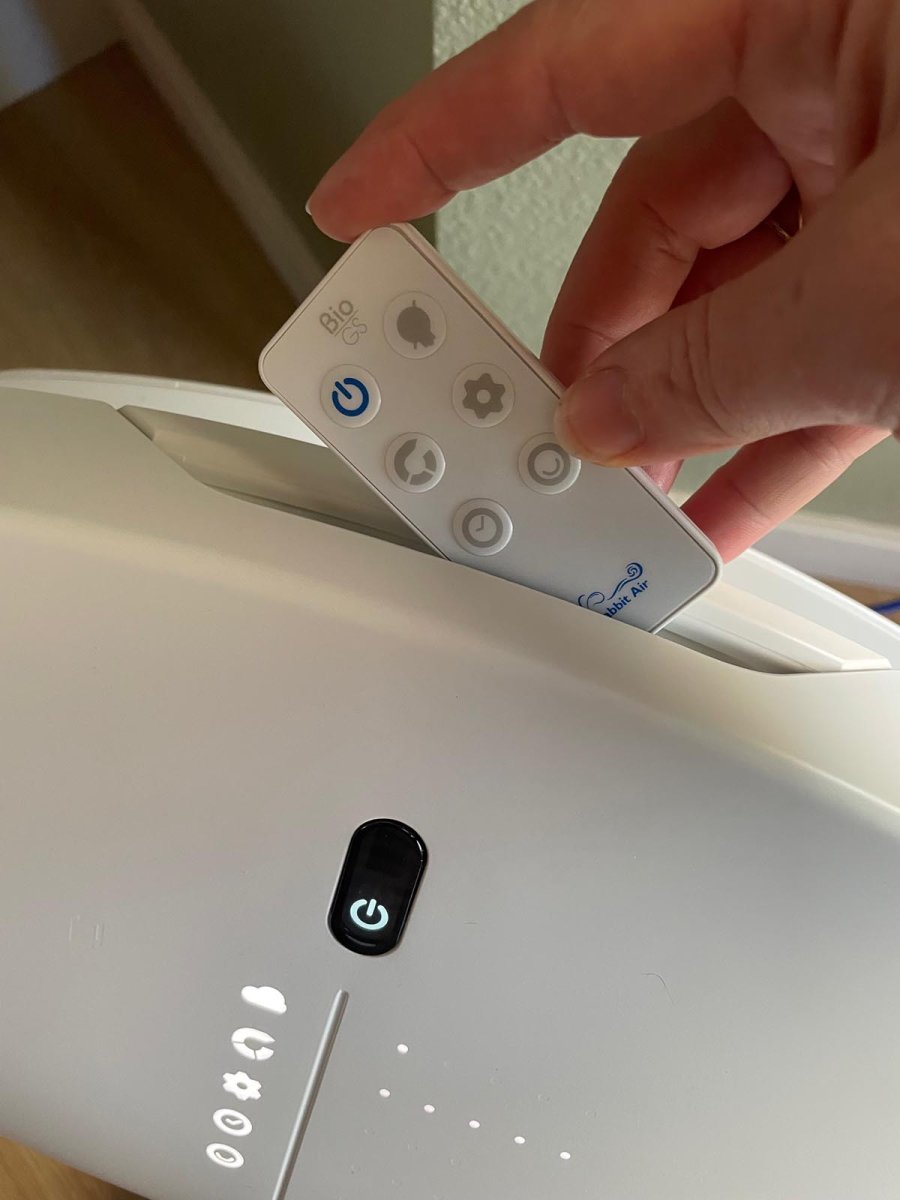
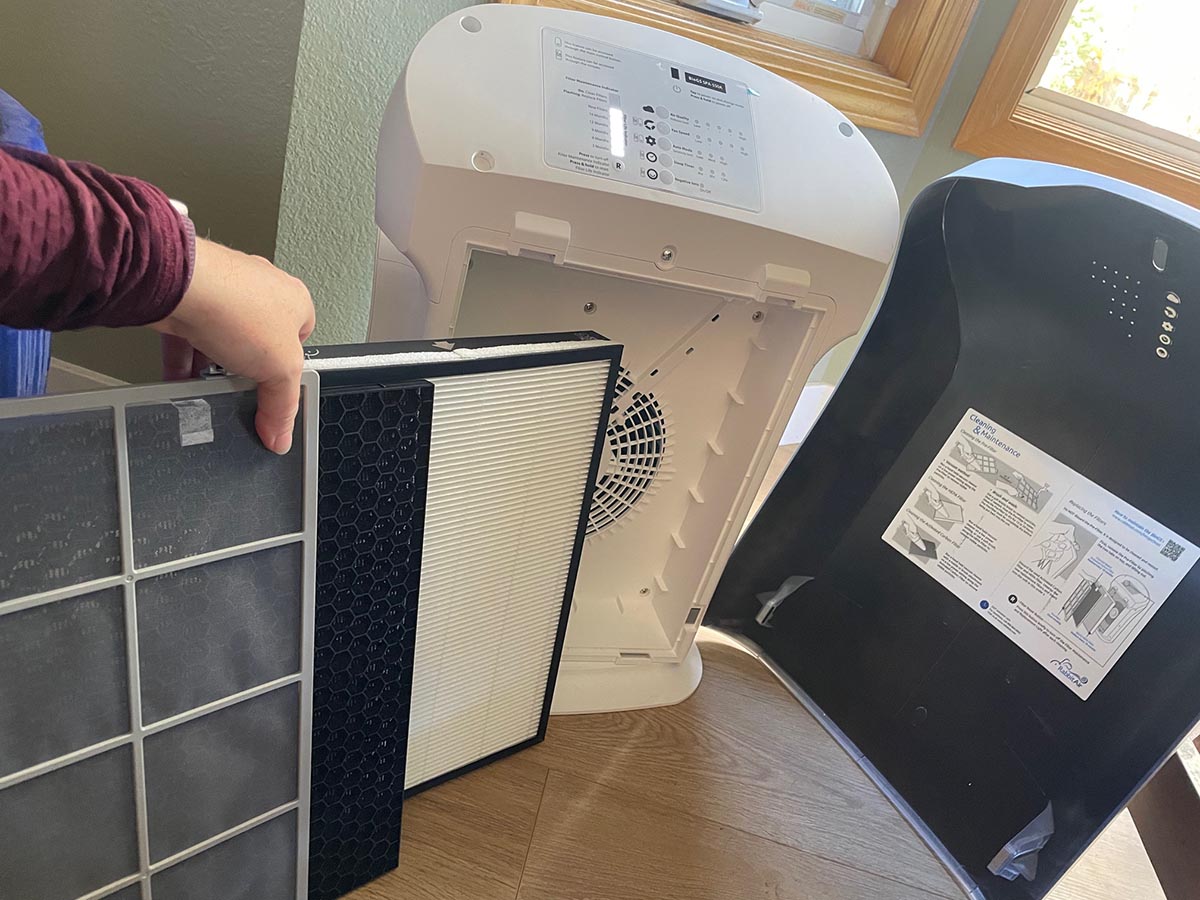
Not everyone appreciates the sudden sound of an air purifier blasting on to handle a sudden influx of airborne pollutants. Those who find that noise at best distracting and at worst overwhelming will appreciate the Rabbit Air BioGS 2.0. With a noise level range of 22.8 on low and 48.6 on high, it wasn’t actually the quietest model on either setting, but it was definitely the quietest model overall—especially considering its ample coverage of up to 1,100 square feet.
The Rabbit BioGS 2.0 held its own in terms of performance as well. The four-stage filtration system did a solid job handling smoke, dust, and odors in our tests, and turning on the optional ionizer seemed to enhance those results even more. It only took about 30 minutes to reduce dust levels significantly and about 45 minutes for smoke, which may not have been as quick as other similarly sized models but was still definitely impressive. Plus, this pick has an attractive modern design with a touchscreen you can set to light up only when you need it and a cleverly hidden handle that makes the relatively lightweight (16.8 pounds) unit incredibly easy to move.
Get the Rabbit Air air purifier at The Home Depot, Amazon, or Rabbit Air.
Best Medical-Grade
Westinghouse 1701 NCCO Air Purifier
Buy at AmazonWhat We Like
- Nano-confined catalytic oxidation (NCCO) reactor kills bacteria and viruses
- Small yet handles rooms up to 300 square feet
- Only weighs 10 pounds and has a built-in handle
What We Don’t Like
- Rather loud and a bit rattly on high
- No air quality indicator
Specs
- Filtration: Prefilter, activated carbon filter, H13 HEPA filter, NCCO technology
- Maximum room size: Up to 300 square feet
- Noise level: 22.8 to 48.6 decibels
Our Ratings: Ease of Use 4.5/5; Performance 4.75/5; Noise 3.75/5; Value 4.75/5
The Westinghouse 1701 air purifier is a unique option in our lineup, as it features a patented NCCO reactor in addition to its HEPA filter. NCCO reactors act as medical-grade filters to kill the viruses, fungi, and bacteria they trap, allowing this unit to remove up to 99.97 percent of pollutants, germs, odors, and VOCs as small as 0.3 microns from the air.
During testing, we were impressed with how well this small air purifier performed. It reduced heavy smoke from dangerous to acceptable levels within an hour and eliminated pet dander, dust, and dirt from our rug-shaking test in just 30 minutes.
Despite those strong results, the Westinghouse does have a few drawbacks. There’s no built-in air quality monitor, and the fan is fairly loud and a bit rattly on high. Still, for small spaces up to 300 square feet, it delivers incredibly comprehensive air cleaning in a sleek, easy-to-move package.
Get the Westinghouse air purifier at Amazon.
Jump to Our Top Picks
Or, DIY Your Own Air Purifier
Need an air filter in a hurry but don’t want to spend the money on a pricey air purifier? We built our own air purifier by taping a 20-inch-long by 20-inch-wide Filterbuy HVAC filter to the back of a 20-inch box fan using clear packing tape. This is a simple way to create an on-the-spot air purifier. The box fan will draw in dirty air through the filter and expel cleaner air out of the front of the fan.
We tested our DIY air purifier by putting it in the test closet and shaking a dirty rug above it. We only tested for particulates because the Filterbuy filter did not contain an activated-carbon layer necessary for absorbing smoke. After 30 minutes of running our DIY air purifier on Low, the particulate level in the closet was back in the safe zone.
Making your own DIY purifier offers some perks and some drawbacks:
What We Like
- Low-cost method for removing airborne particulates
- Powerful airflow that can purify a room quickly (even on low)
- Purifier is customizable based on the filter purchased
What We Don’t Like
- Noisy; ours generated 53 to 67 decibels
- Most box fans are not designed for energy efficiency
- HVAC filters are not suitable for removing smoke, odors, or VOCs
Jump to Our Top Picks
How We Tested the Best Air Purifiers
| Testing Stats | |
|---|---|
| Products tested | 18 |
| Time spent testing | 2 weeks to 2+ years |
| Tests performed | 9 |
| Price range | $50 to $500 |
We started by researching dozens of air purifiers across a range of sizes, prices, and features, then narrowed the list to 18 of the highest-rated models for hands-on testing. To make the cut, each contender had to offer efficient filtration, strong customer satisfaction, and solid value for the price. We compared features like filter type and longevity, coverage area, noise level, energy efficiency, ease of maintenance, and overall design. We also noted helpful extras like auto modes, smart connectivity, and air quality monitoring to see which models offered the best balance of performance and convenience.
We tested each purifier individually alongside an air quality monitor to track how quickly it removed airborne particulates from shaken rugs and visible dust from vacuum debris. We conducted smoke tests by burning five incense sticks and taking air quality readings every 30 minutes. Finally, we used each puffier for a period of at least 2 weeks to see how they handled everyday pollutants like pet dander, cooking odors, and outdoor air. We each option out of 5 for ease of use, performance, noise, and value, and used those ratings to determine our 10 top picks. The models that didn’t do quite as well as the others didn’t make our list.
| Product | Ease of Use | Performance | Noise | Value |
| Coway Airmega AP-1512HH Mighty Air Purifier | 4.75 | 4.5 | 4 | 4.75 |
| Levoit Core Mini-P Air Purifier | 4.5 | 3.5 | 4.5 | 4.5 |
| Pure Enrichment PureBaby Bear Air Purifier | 4.5 | 4 | 4 | 4.5 |
| Clorox Medium-Room Turbo+ True HEPA Air Purifier | 4.5 | 4.5 | 4 | 4.3 |
| Sans Whole Home Air Purifier | 4.75 | 4.75 | 4 | 4.3 |
| Coway Airmega 450 Air Purifier | 4 | 5 | 3.5 | 4 |
| Windmill Air Purifier | 4.5 | 4.75 | 4.75 | 4 |
| Shark NeverChange Air Purifier Max | 4.75 | 4.5 | 3.5 | 4.2 |
| Rabbit Air BioGS 2.0 Air Purifier | 4.5 | 4.25 | 5 | 4.2 |
| Westinghouse 1701 NCCO Air Purifier | 4.5 | 4.75 | 3.75 | 4.75 |
What to Consider When Choosing an Air Purifier
In addition to the main types of air purifiers, some models offer a few extra features that can help shoppers decide if a specific machine will be adequate for its intended use. Size, power level, and design all play a role.
Types of Filters
To get the best air purifier for home use, shoppers will want to consider the type of airborne pollutants in their home. Many of today’s air purifiers come with HEPA filters; some offer additional activated-carbon and negative-ion modes. Each type targets a specific pollutant, but shoppers may not need all types.
HEPA
At one time, these high-efficiency filters were limited to use in hospital settings and nuclear facilities and were on the pricey side. However, in the past couple of decades, with advances in consumer use, they’ve become a standby in most air purifiers and high-end vacuums.
The dense mesh of a HEPA filter traps up to 99.7 percent of particles as small as 0.3 microns, according to the U.S. Environmental Protection Agency (EPA). Some souped-up HEPA filters trap even smaller particles. This makes an air purifier with a HEPA filter essential for removing particulates, such as dust, pet dander, mold spores, and pollen.
According to Ryan McNabb, virtual HVAC expert at Frontdoor, the all-in-one app for home care and maintenance that connects homeowners with service providers, a HEPA filter is “the best for tackling mold, smoke, and pet dander.”
Those looking to buy an air purifier for pets or an air purifier for allergies will want to consider one that comes with a HEPA filter. A notable downside is that HEPA filters won’t remove all types of viruses, bacteria, or VOCs, which can slip through the filter. McNabb recommends that pet owners “find an air purifier with a prefilter before the HEPA filter, which will help trap large particles such as dog hair.” This will also help prolong the effectiveness of your HEPA filter.
Activated Carbon
“HEPA filters do not remove odors,” McNabb notes, “so for smoke odors (and other odors for that matter), find an air purifier that has an activated-carbon filter along with the HEPA filter.”
An activated charcoal filter is thinner than a HEPA filter and better at absorbing odors, smoke, and VOCs. Many manufacturers are combining the two filters to give users a more comprehensive range of protection against airborne pollutants. Activated carbon is highly porous, and as the purifier draws in the air from the room, it forces it through the carbon filter, where the smells and gaseous impurities stick to the carbon and are absorbed.
The expelled air is fresher, but depending on the quality and size of the activated-carbon filter, odorous air may need to filter through the machine two or more times to get rid of lingering odors. In our smoke tests, the larger purifiers removed smoke more quickly than the smaller ones.
A slight downside to activated-carbon filters is that they can require frequent replacement, and the housing inside the air purifier should be cleaned periodically to remove smells and prevent mold growth. (See product owner’s manual for cleaning directions.) Still, activated carbon is the way to go when it comes to air filters for smoke, VOCs, and disagreeable odors.
Negative Ion or UV-C
Also called an “ionizer,” a negative-ion air purifier cleans the air by emitting electrically charged particles (negative ions) that adhere to airborne particulates, such as pollen and dust, which increases their weight; they then theoretically fall to the floor. To keep the particulates from being stirred up again, it’s a good idea to vacuum often when running an air ionizer.
A potential downside to having an ionizer machine in your air purifier is that it may emit ozone as a byproduct of the ionizing process. The EPA categorizes ozone as a lung irritant, so shoppers looking for a purifier with a negative ion feature may want to assure themselves that the model does not emit dangerous ozone levels.
UV-C light technology, often found in more advanced air purifiers, uses ultraviolet light to deactivate airborne pathogens like bacteria, viruses, and molds by disrupting their DNA structure. The light doesn’t remove particles by itself, it simply adds an extra layer of germicidal purification. For that reason, UV-C works best as a complementary feature alongside HEPA and activated carbon filters.
Area Coverage
According to McNabb, “The largest factor when purchasing an air purifier is making sure it’s properly sized for the space. Getting a purifier that is too small for the room can lead to ineffective filtering, and one that is too large can generate excessive noise and will cost more to both purchase and run.”
Air filters may come with a clean air delivery rating (CADR), measured in cubic feet per minute (CFM), or they may just state the appropriate room size they’re best suited for. Always check the manufacturer’s specs and measure the room where the air cleaner is intended for use. However, here are some general guidelines to consider:
- CADR ratings of 100 to 200 CFM will freshen small rooms such as nurseries, bedrooms, or home offices.
- CADR ratings of 300 CFM or higher are well suited to great rooms and open living spaces.
Keep in mind that to ensure the freshest air, a purifier should be used in conjunction with healthy household hygiene, including daily vacuuming, dusting, and using only chemical-free cleaners and pesticides when possible.
Size and Aesthetics
For most people, how an air cleaner looks is secondary to how well it performs, but with some of today’s trendiest models, there’s no need to give up style for performance. Many air purifiers come in standard white, but a few offer sleek gray or black exteriors, and a handful offer a color option.
As the popularity of air purifiers continues to climb, manufacturers will undoubtedly offer a broader range of colors and sizes. We tested several models that were large and designed for floor use, but we also found compact models that could be located on a table or dresser.
Additional Features
Air purifiers are straightforward devices; they draw in the air from the room, force it through filters, and then expel the cleaned air back into the room. Still, shoppers can find some unique features that include:
- An auto mode that senses the pollution level in the room and adjusts the fan speed to suit
- A programmable timer that allows the user to set the machine to run for a specific time
- Sleep mode that is whisper quiet (and has dim lights) but still works to freshen the air as the user sleeps
- A remote control that makes it easy to operate the machine from across the room or program a timer
- A built-in air quality monitor that shows the freshness of the air in the room
- Smart integration that syncs with a home Wi-Fi network, allowing the user to control the unit from a smartphone or use voice commands
- Combination air purifier with humidifier units that add moisture to the air while they clean it
Tips for Using and Maintaining an Air Purifier
In testing, we found that about half of the air purifiers came with a plastic-wrapped internal filter that had to be removed before the user could operate the machine. Most of the units were marked with instructions to disassemble the unit and unwrap the filter. Still, it’s a good idea to check if the plastic is there, even if there are no visible warnings, to keep from damaging the machine by running it with the wrapping on. In addition, the following tips will maximize the air cleaner’s effectiveness and keep it in good working order:
- Run the air purifier around the clock to maintain the freshest indoor air
- Consider investing in an air quality monitor if the machine doesn’t have one built in; poor air quality could indicate a dirty filter or too-low fan speed
- Clean the unit periodically—wipe down the exterior, replace the filters, and check inside to ensure there’s no mold growth
FAQs
Potential downsides include cost and noise. High-end purifiers cost hundreds of dollars and some can be annoyingly loud on the highest settings. Perhaps the most significant consideration, however, is a false sense of security—even a high-quality air purifier for dust or a solid air purifier for mold will not eliminate all pollutants in the home. Users will want to follow good housecleaning practices to help reduce overall pollutants.
That all depends on individual needs. Air purifiers with HEPA filters are the most efficient for removing particulates, while models with carbon filters are better for removing odors. To reduce airborne viruses, consider buying a purifier that uses ultraviolet technology.
Look for a unit with a CADR that is at least equal to the room’s floor area. Choose a machine that offers the filters necessary to clean the specific types of pollutants in your home.
Usually, it’s a simple process, and many air purifiers with washable filters even allow you to clean the prefilter layer rather than replacing it. To replace charcoal and HEPA filters, remove the filter panel, pull the old filters out, and put new ones in their place. If your model has a combination filter with all three layers in one, all you do is take that out and replace it with a new one.
For the cleanest air, yes, running the purifier day and night is usually best. Many models come with a near-silent mode for night use, and some users may even find that the sound of the air purifier acts like white noise, which helps drown out other distracting sounds for better sleep.
According to McNabb, carbon filters should last about 3 months, and HEPA filters should be replaced every 6 to 12 months. He recommends shortening these intervals if air quality is particularly poor. “Many air purifiers sold today will come with a filter replacement reminder to help you keep track of when to replace filters,” he says.
No. Air purifiers do not increase or decrease oxygen in a room. Instead, air purifiers filter out airborne particles and pollutants, which has no impact on oxygen levels.
The best place to put an air purifier is generally close to the problem (the stove for cooking odors, near animal beds for pet allergies) and at about breathing height (3 to 5 feet off the ground). They’ll also work better if they have plenty of space around them to draw in air and if the room’s heat and humidity levels aren’t especially high.
Meet the Testers
Lizzy Briskin tests and reviews home and kitchen products. She is a trained chef and recipe developer, as well as a writer living in New York City, where her apartment is regularly exposed to airborne particulates from her own stove, smog, and viruses. She relies on good air purifiers in every room to keep her home healthy and the air breathable.
Michelle Larson has been a writer and editor for more than 10 years in the fields of health, business, and the home. Given her lifelong interest in wellness, she became a go-to tester for every air purifier the Bob Vila team can get its hands on. She believes daily use and targeted testing are key to recommending quality products built to last.
Glenda Taylor is a product tester and writer specializing in the construction, remodeling, and real estate industries. She tests a wide range of power tools as well as other home improvement, household, and lawn-and-garden products.
